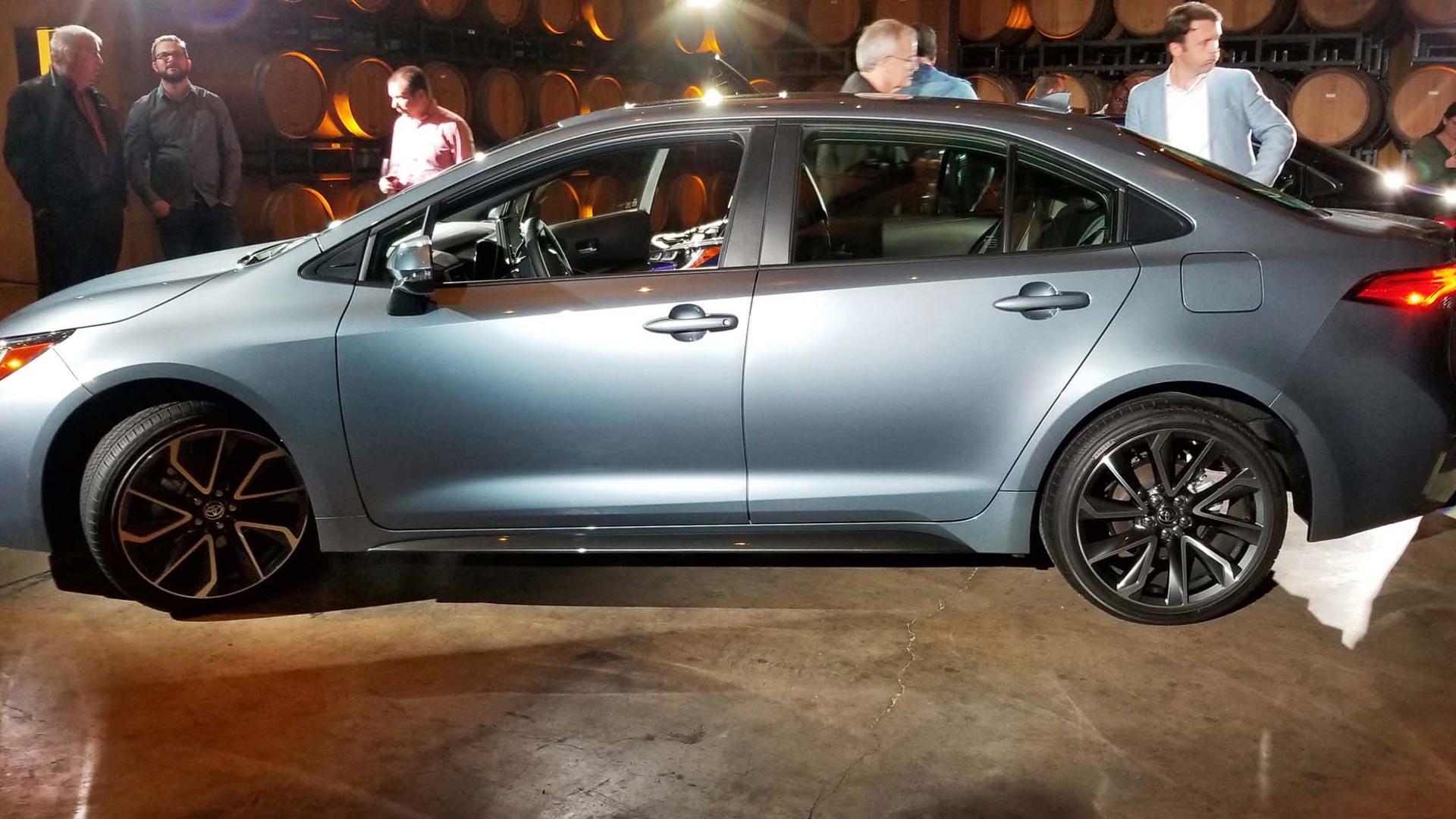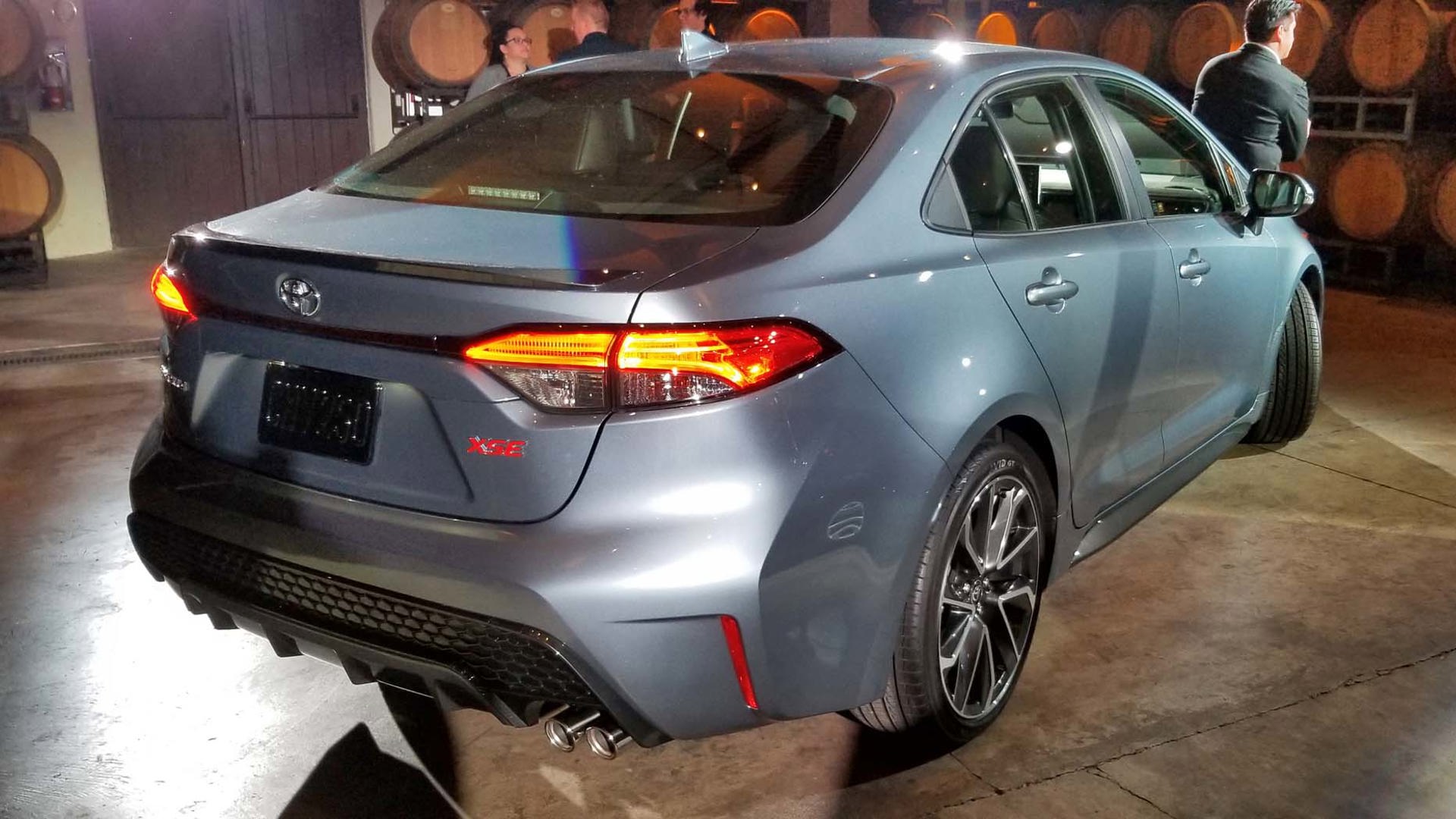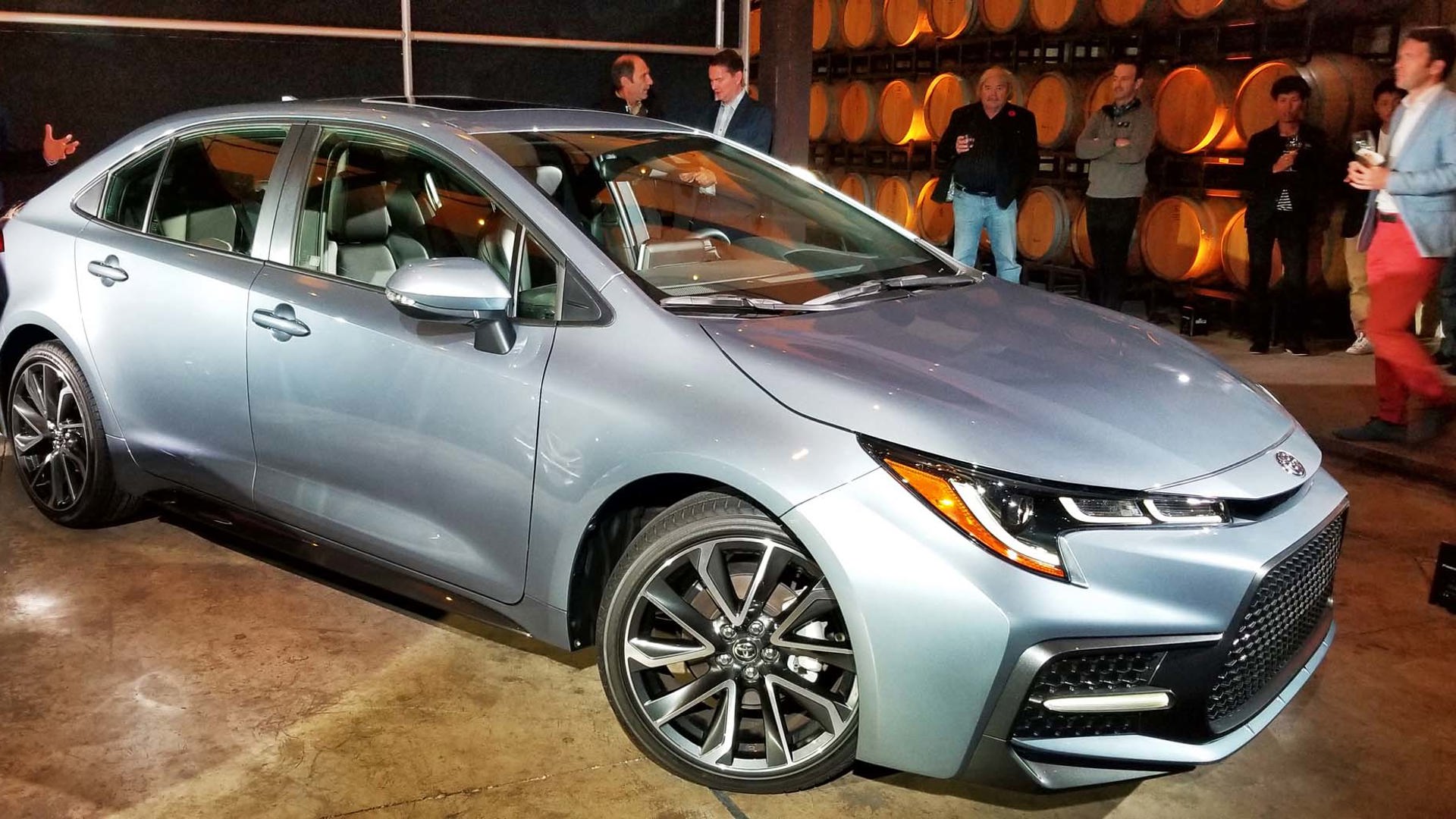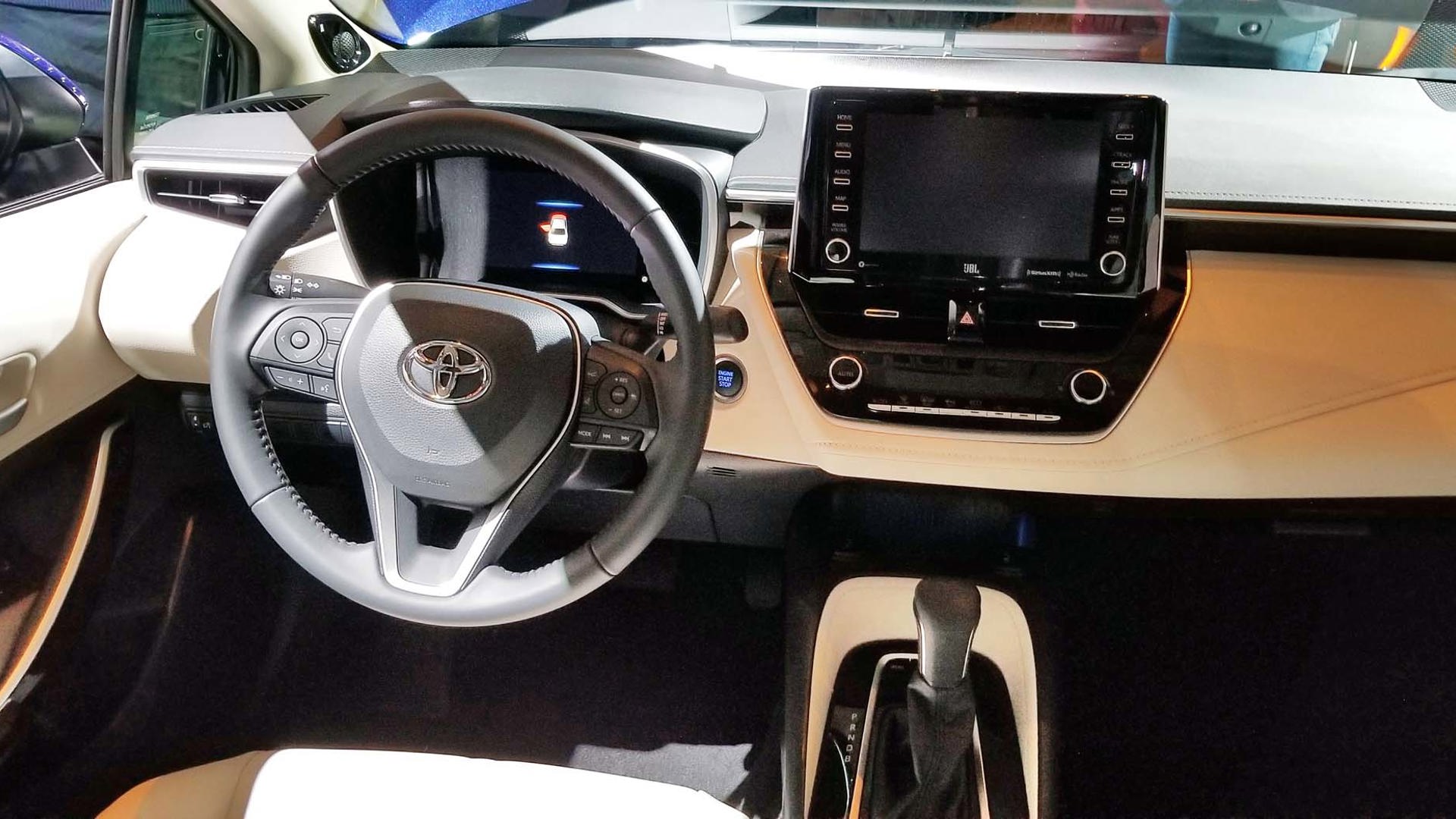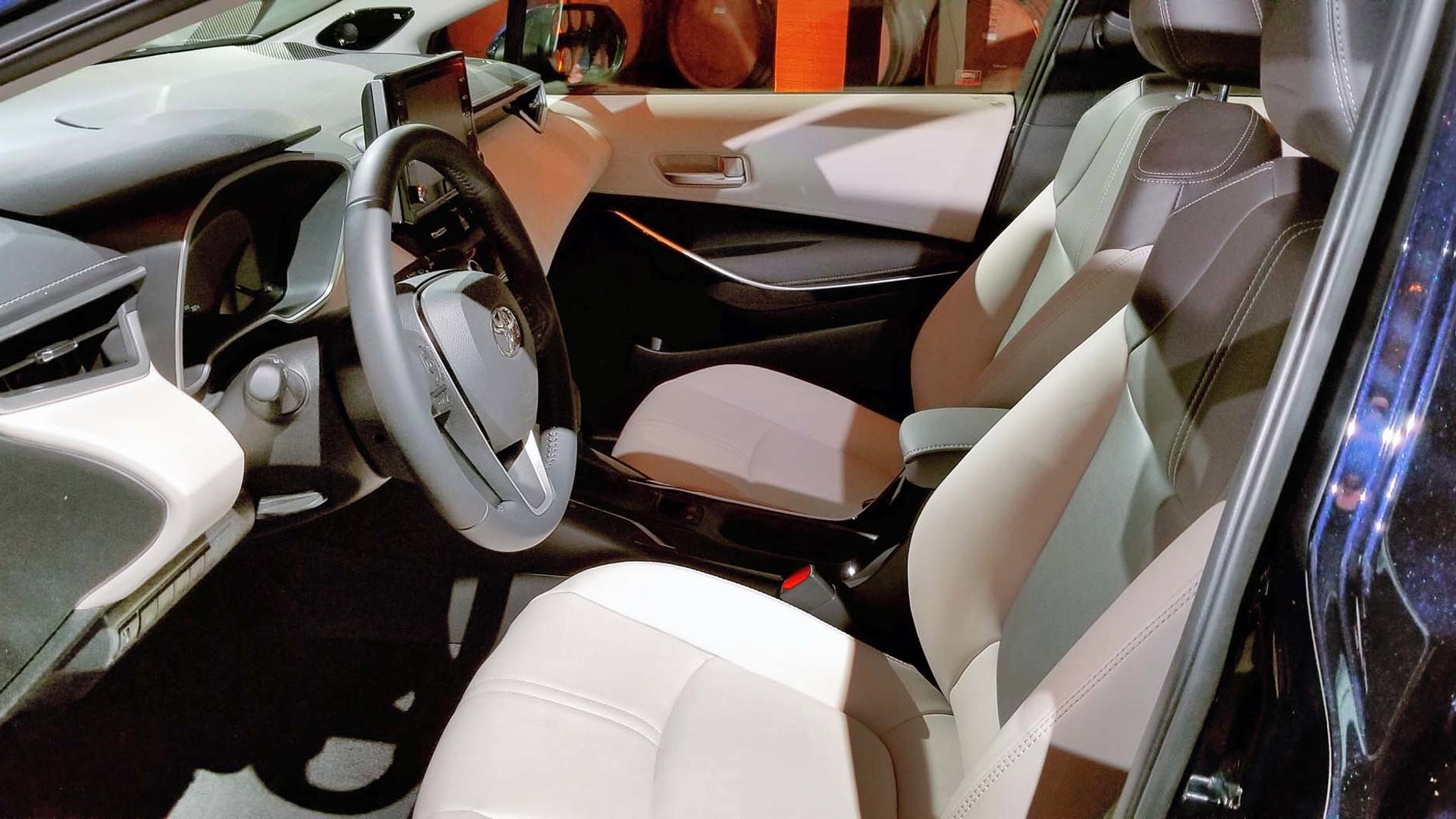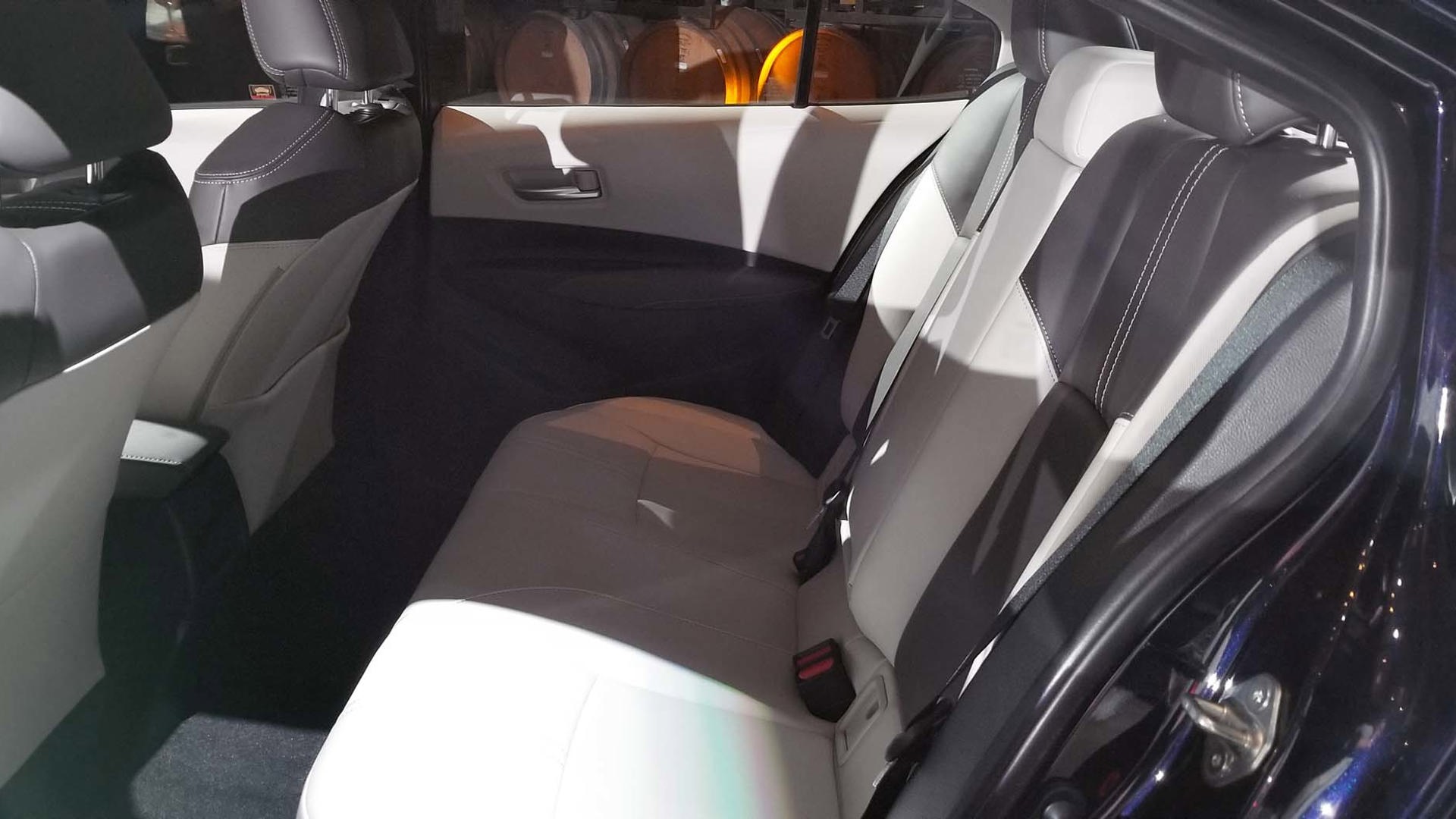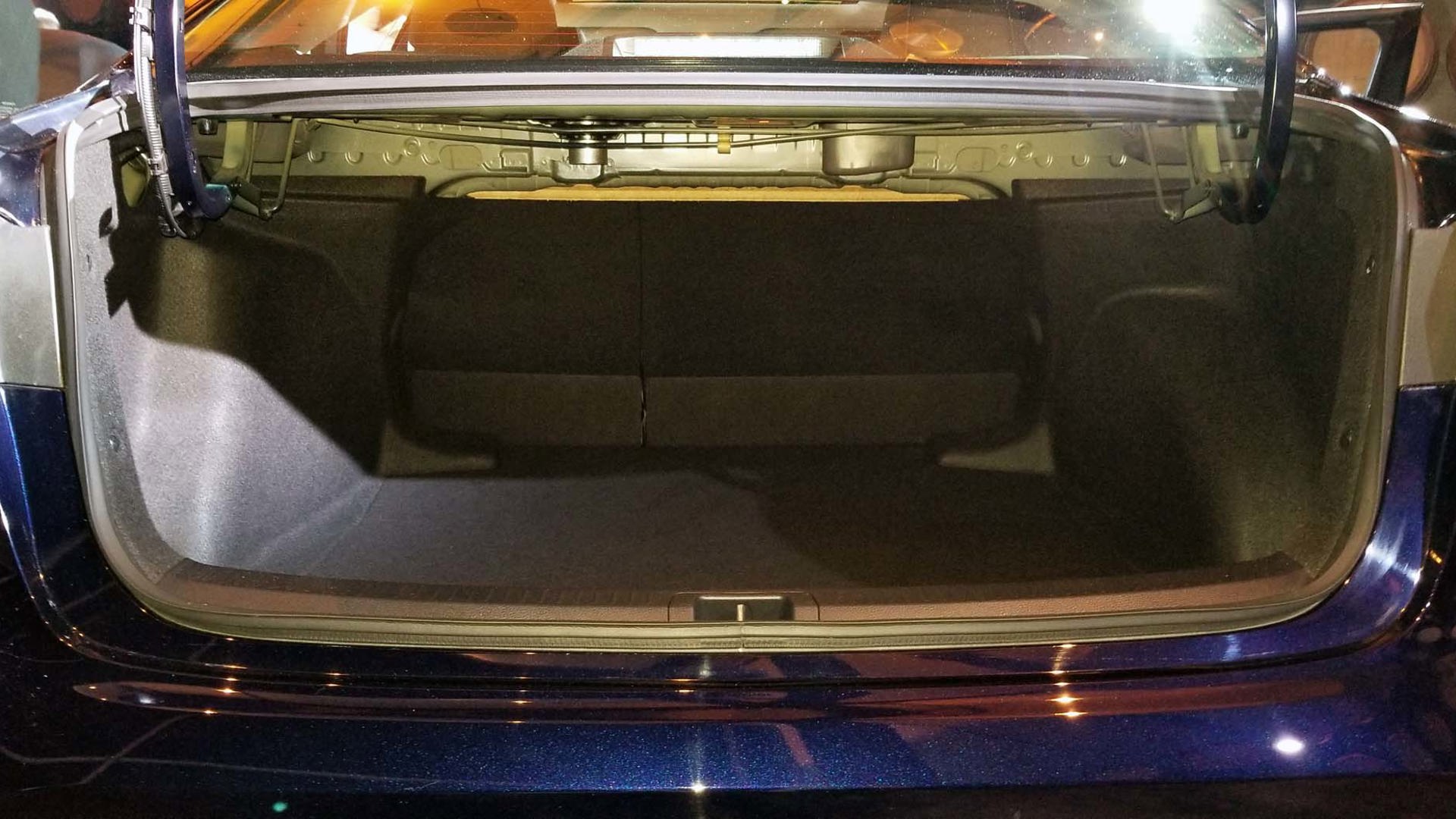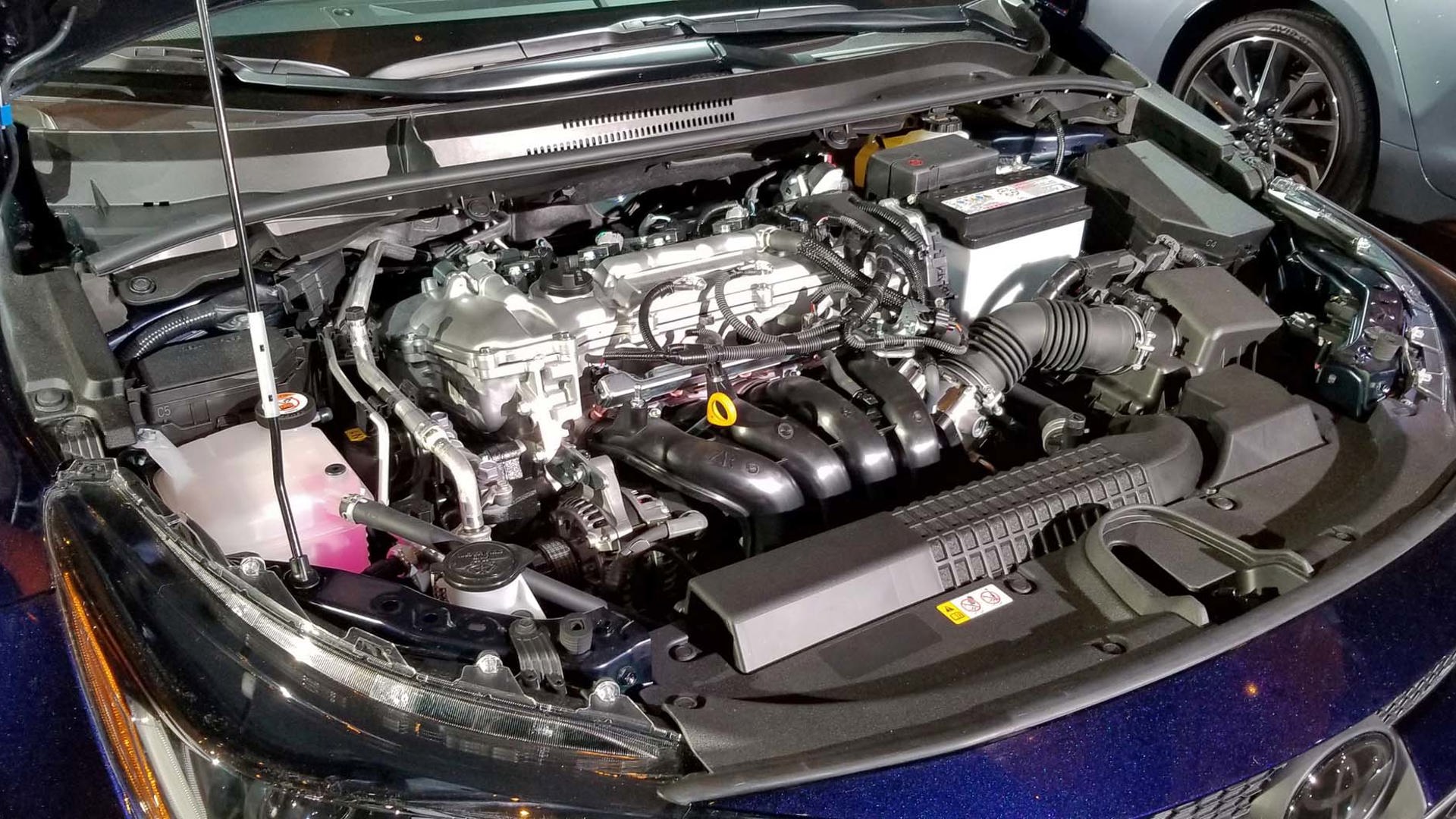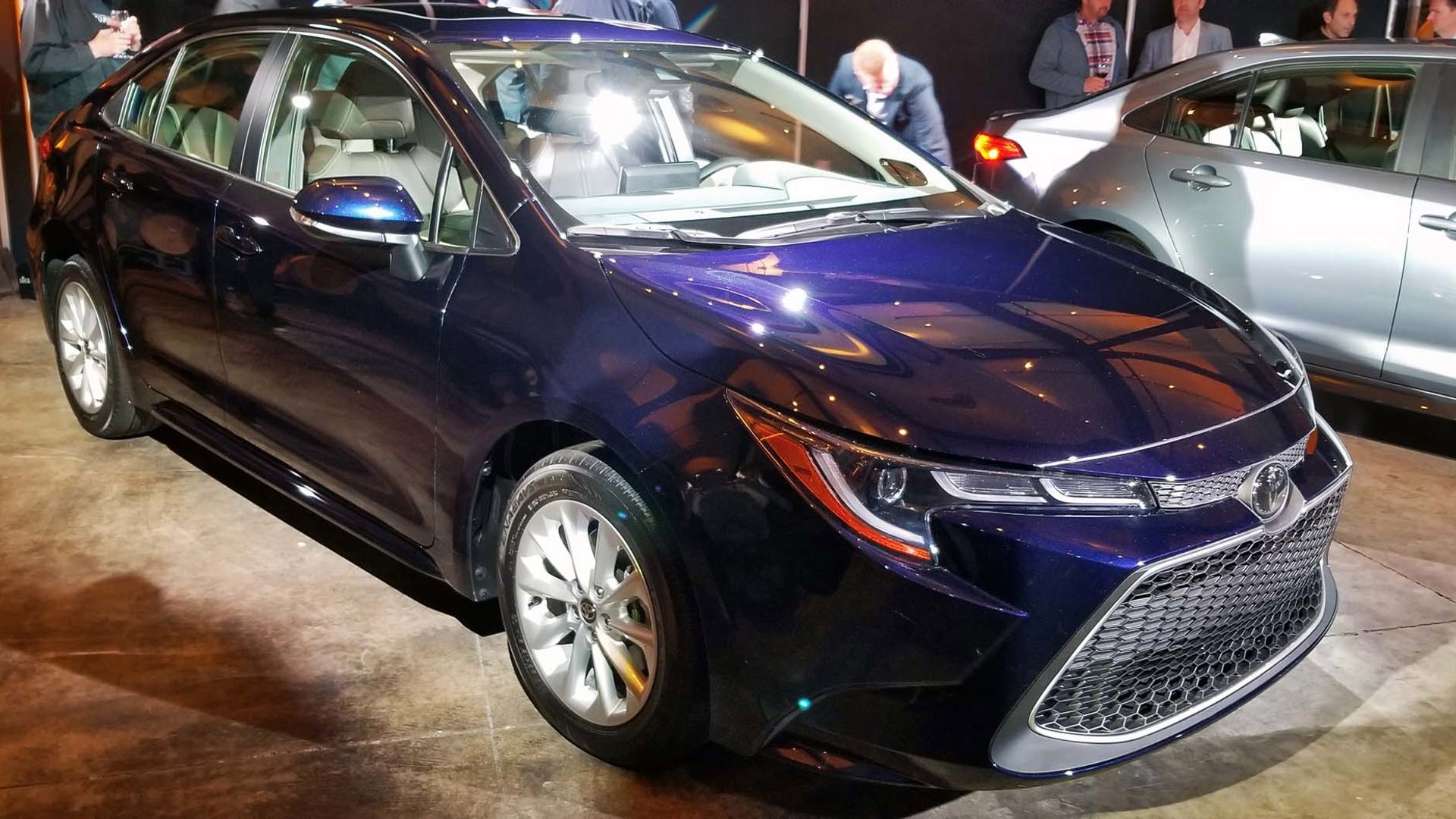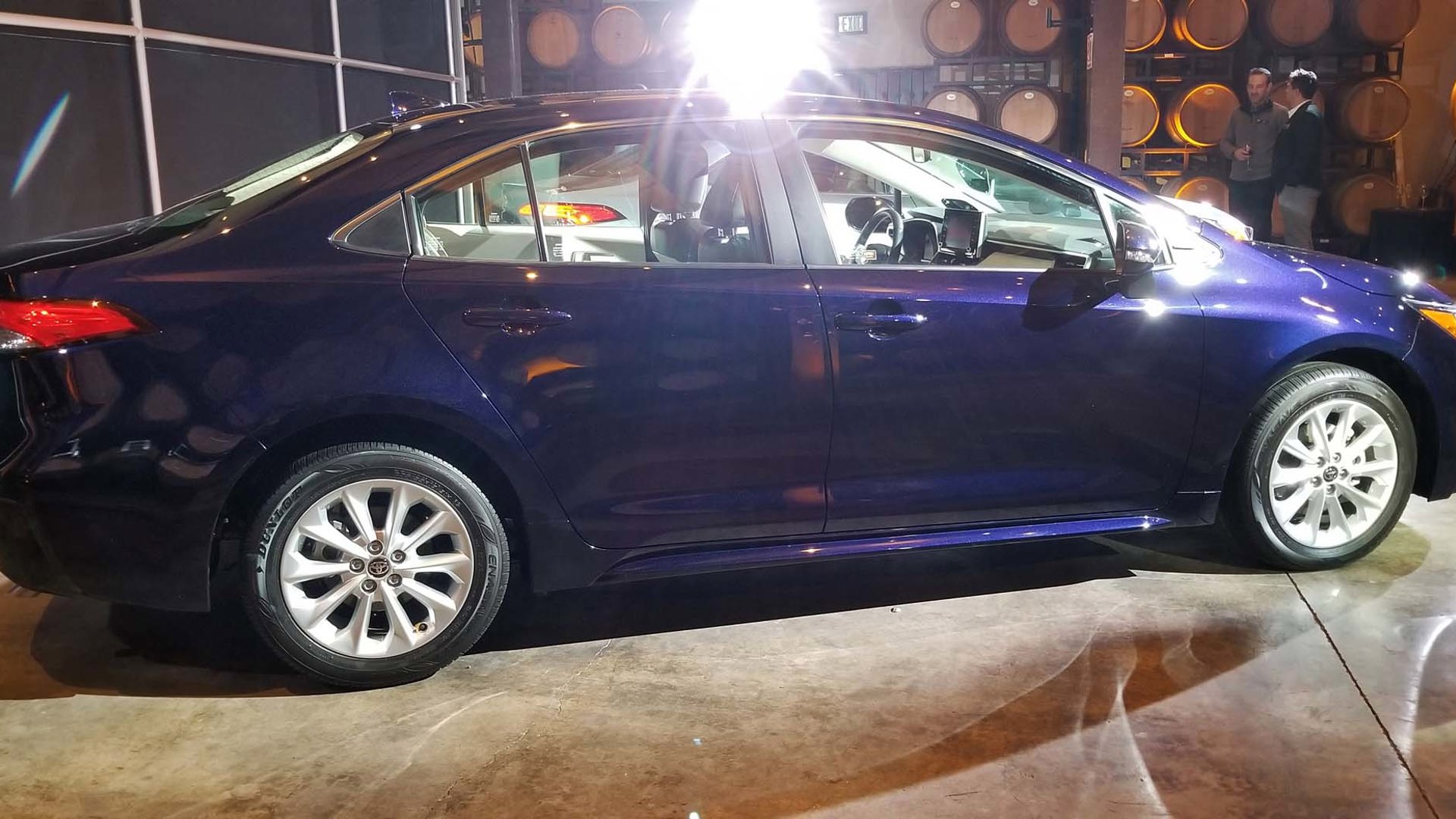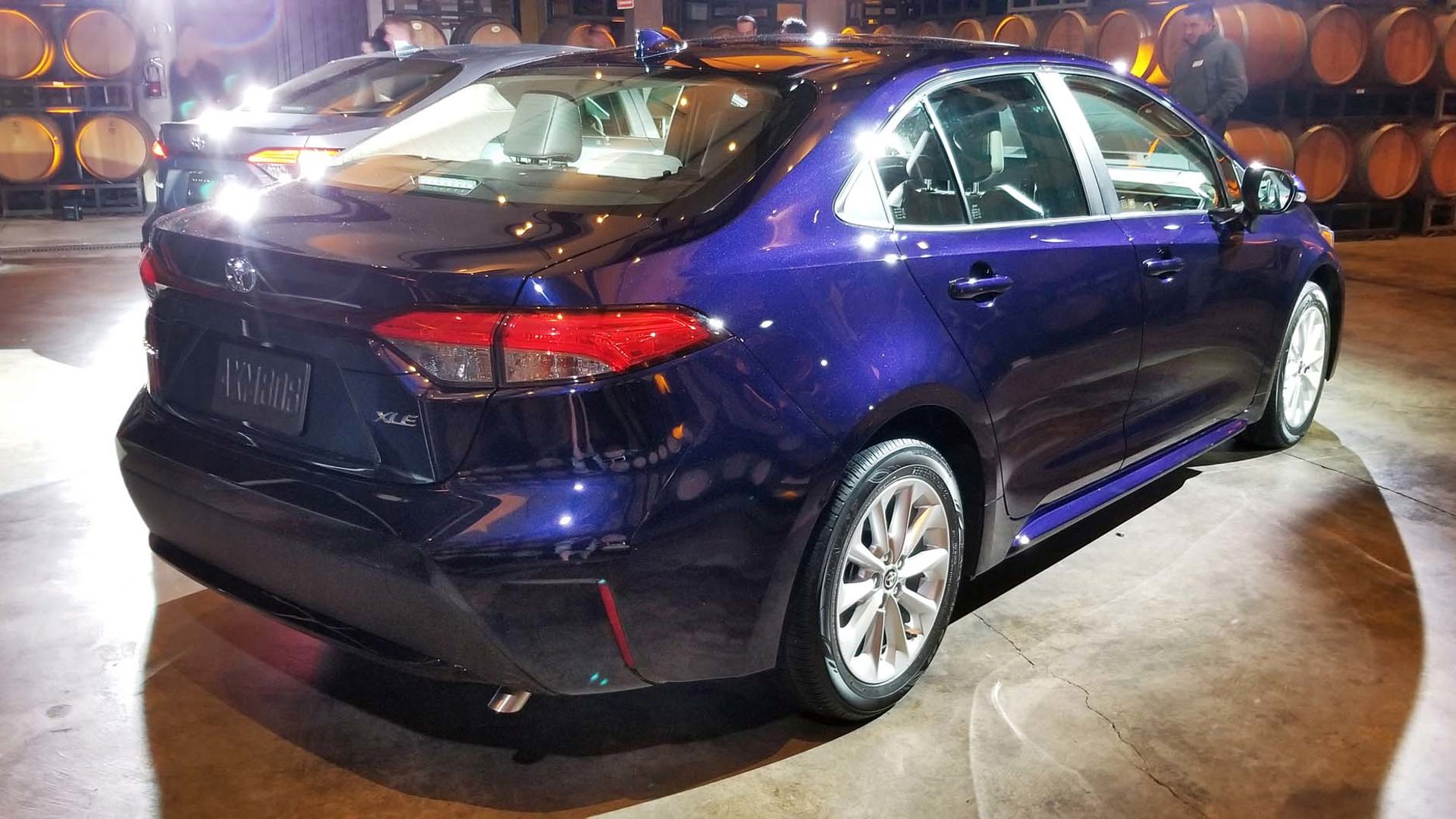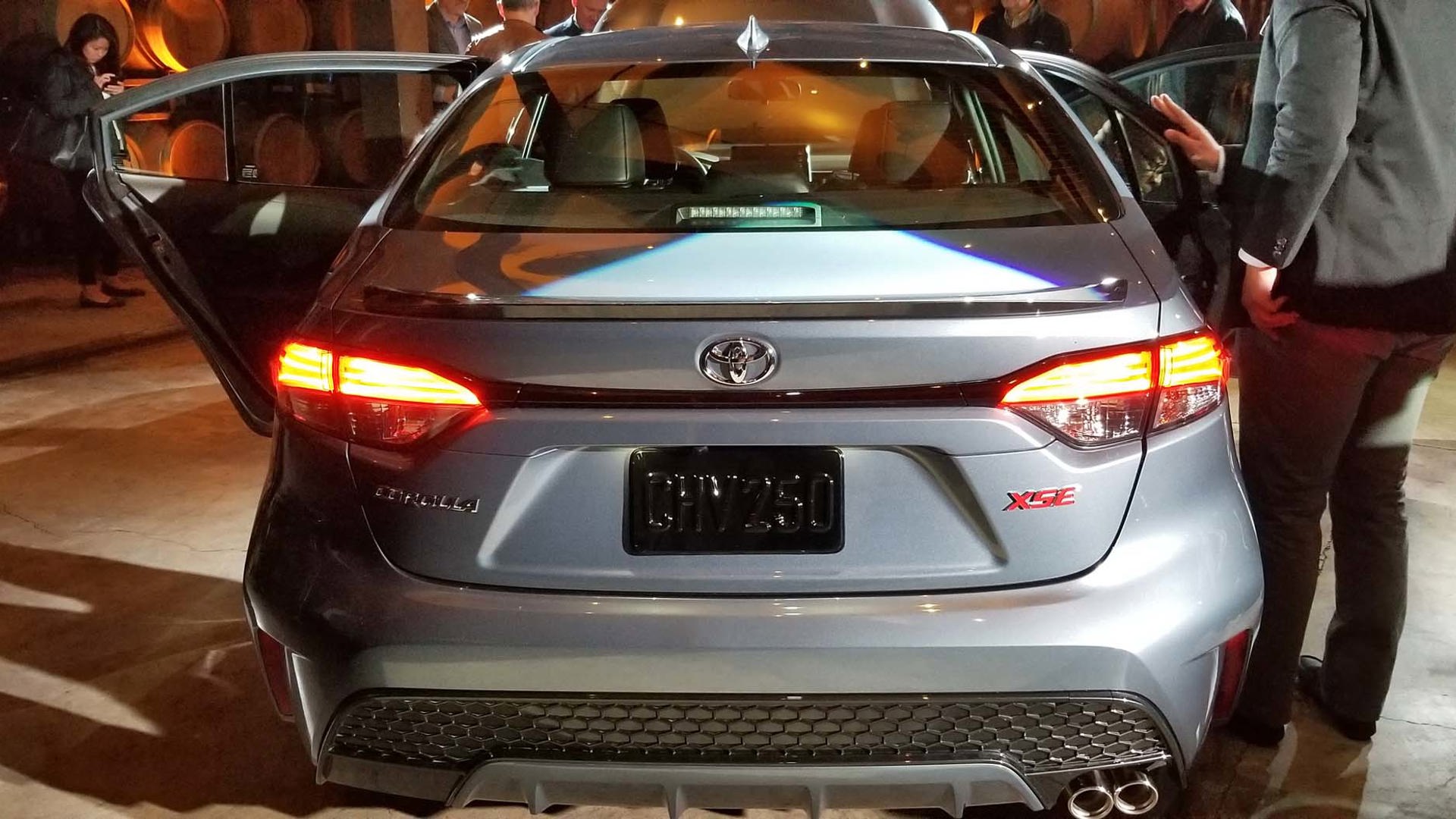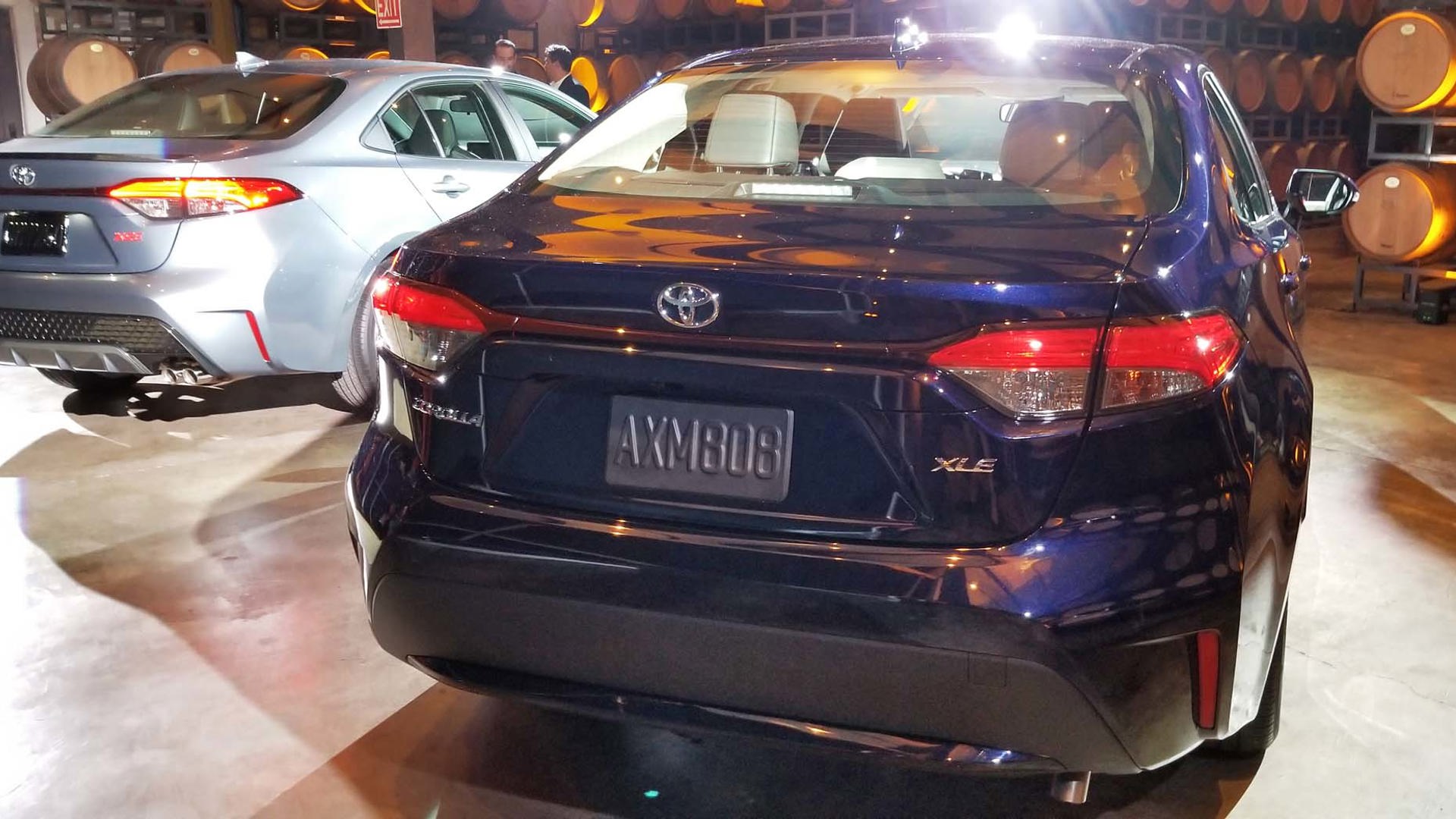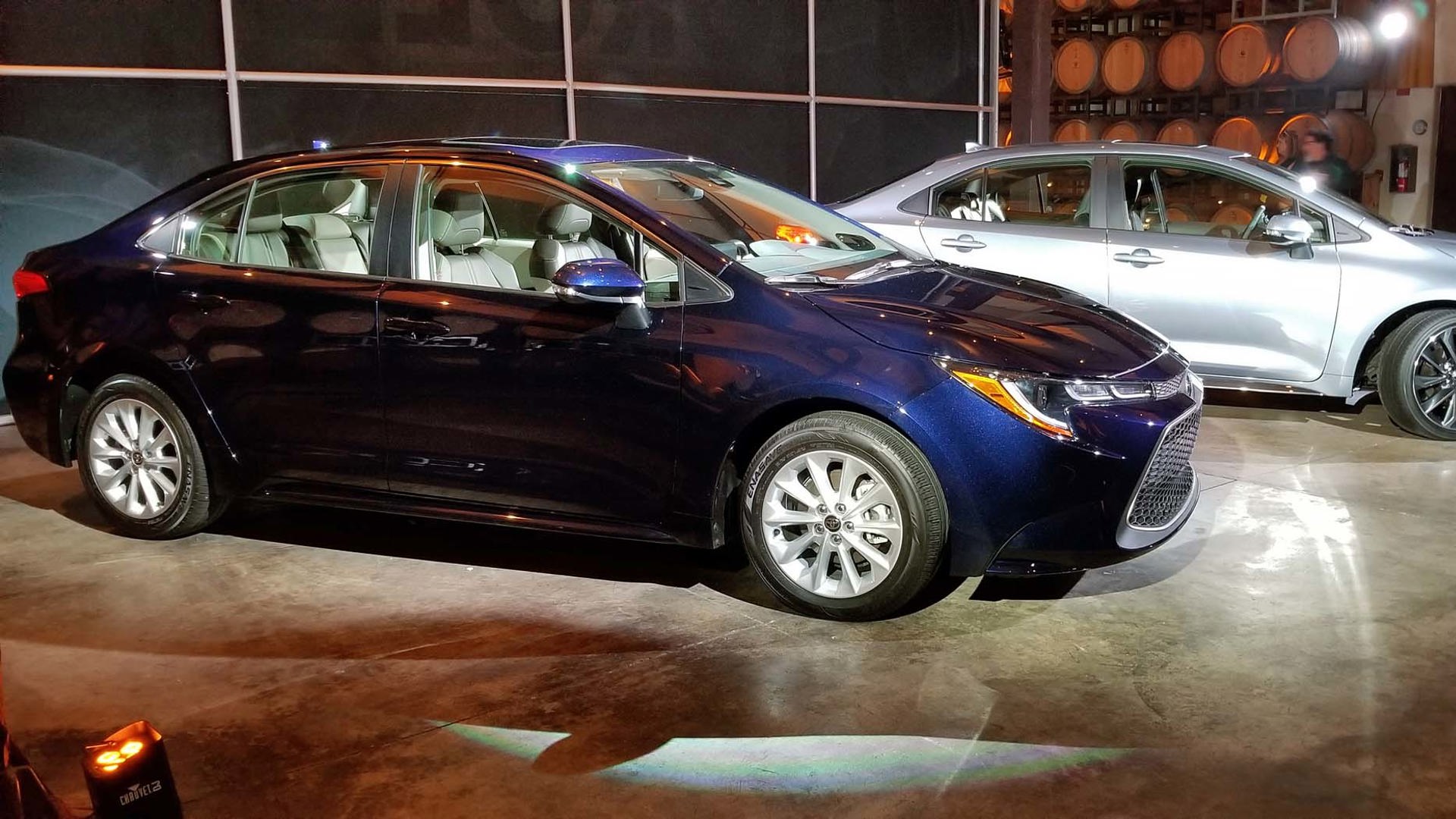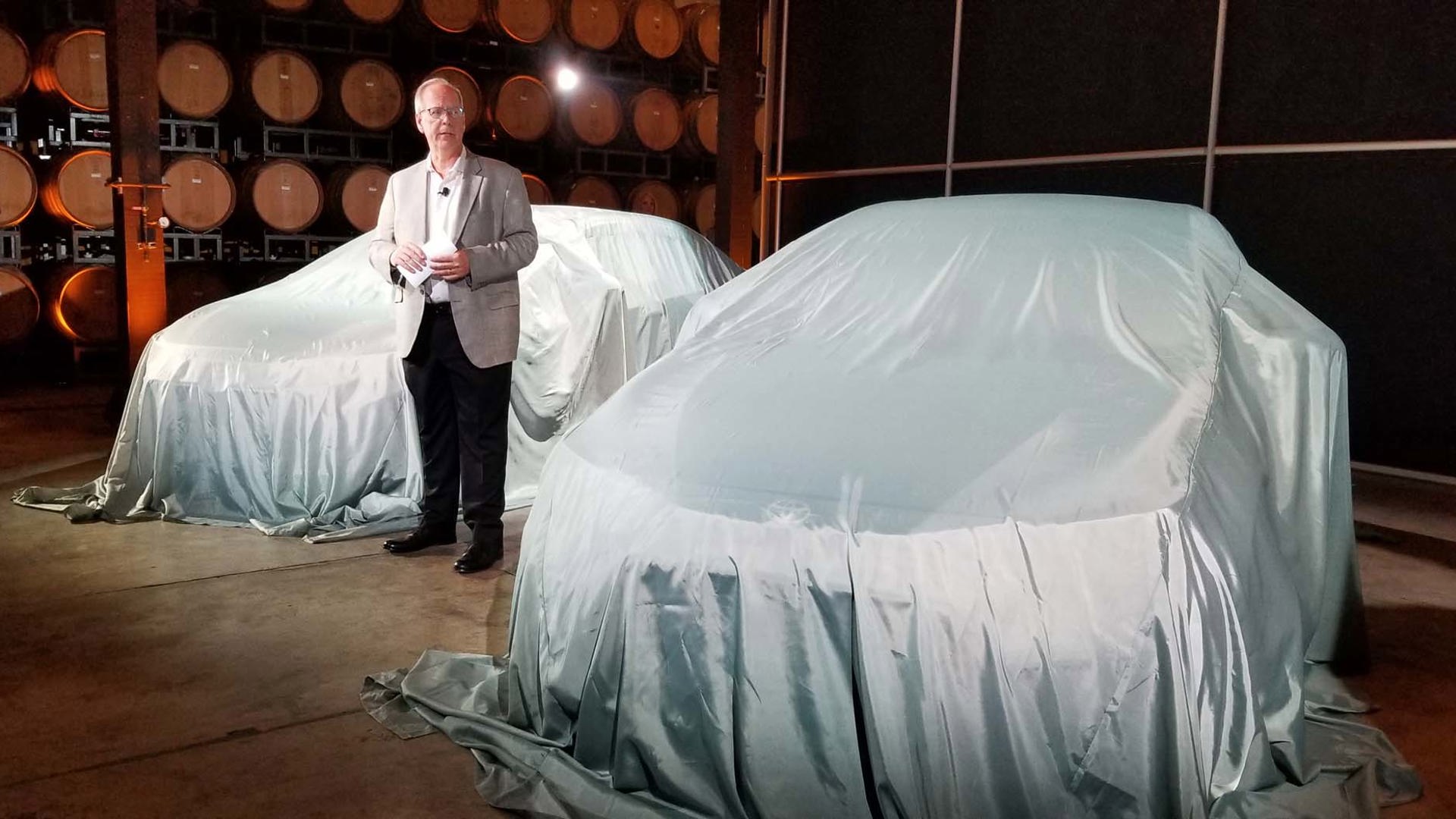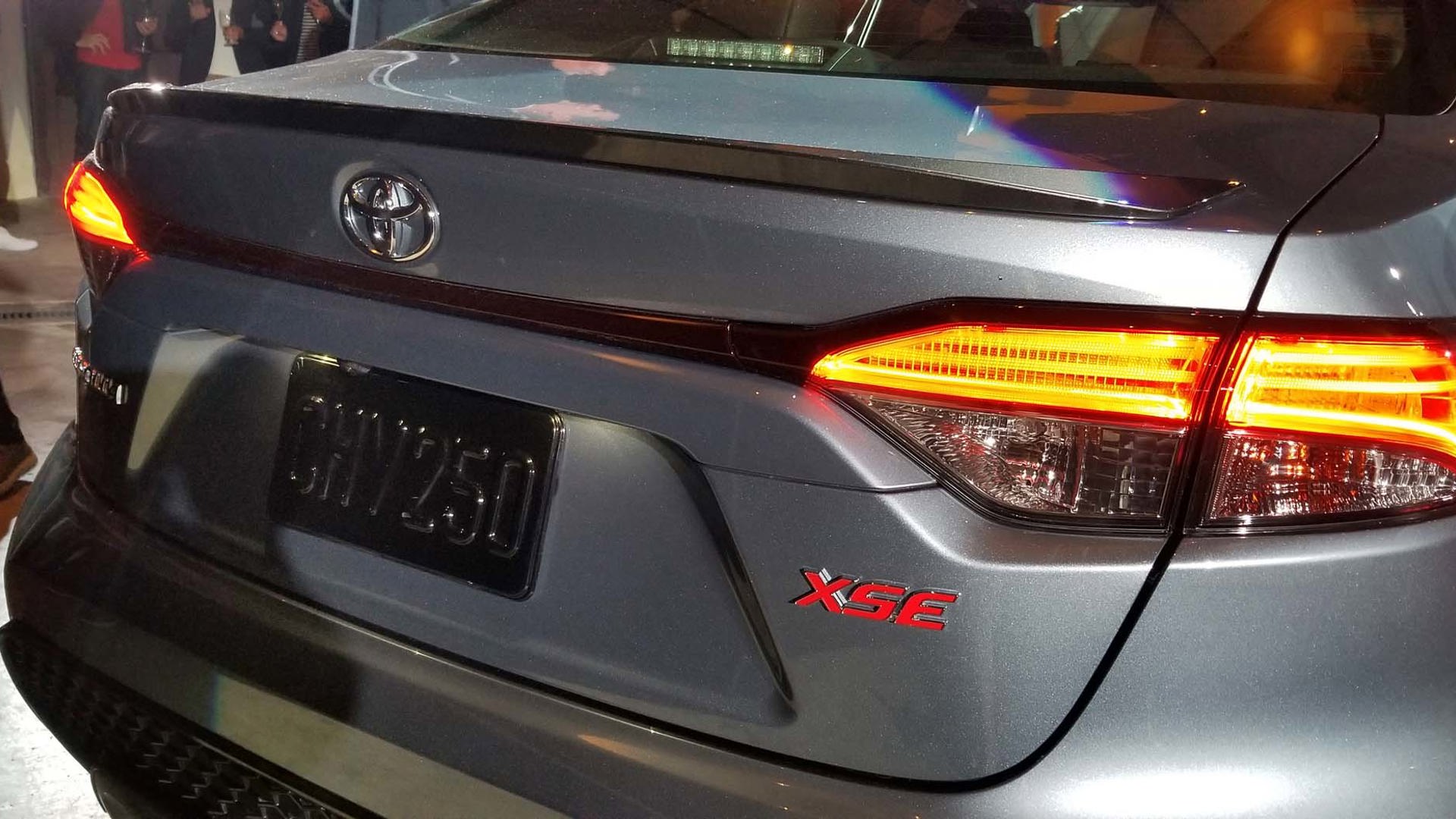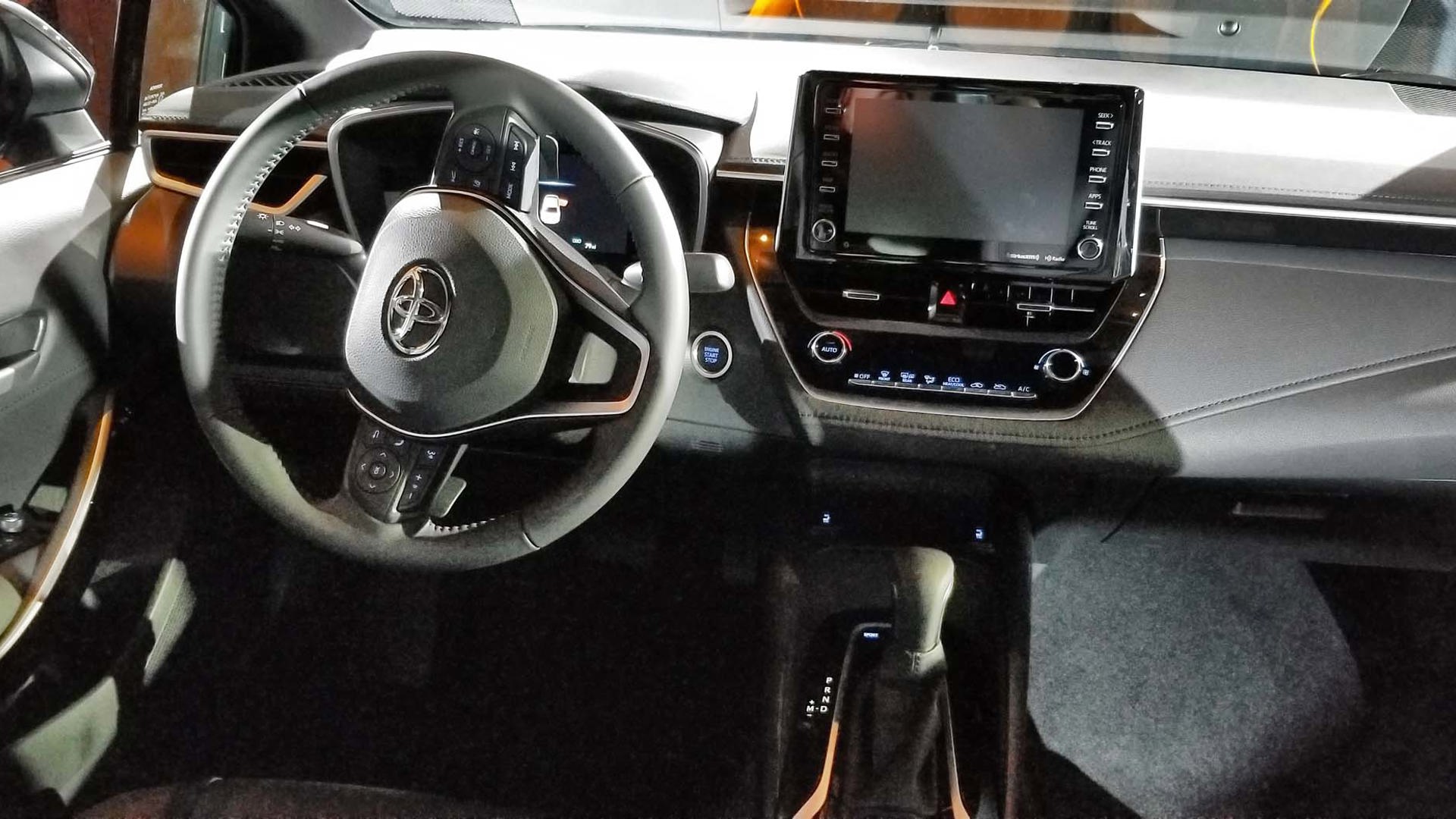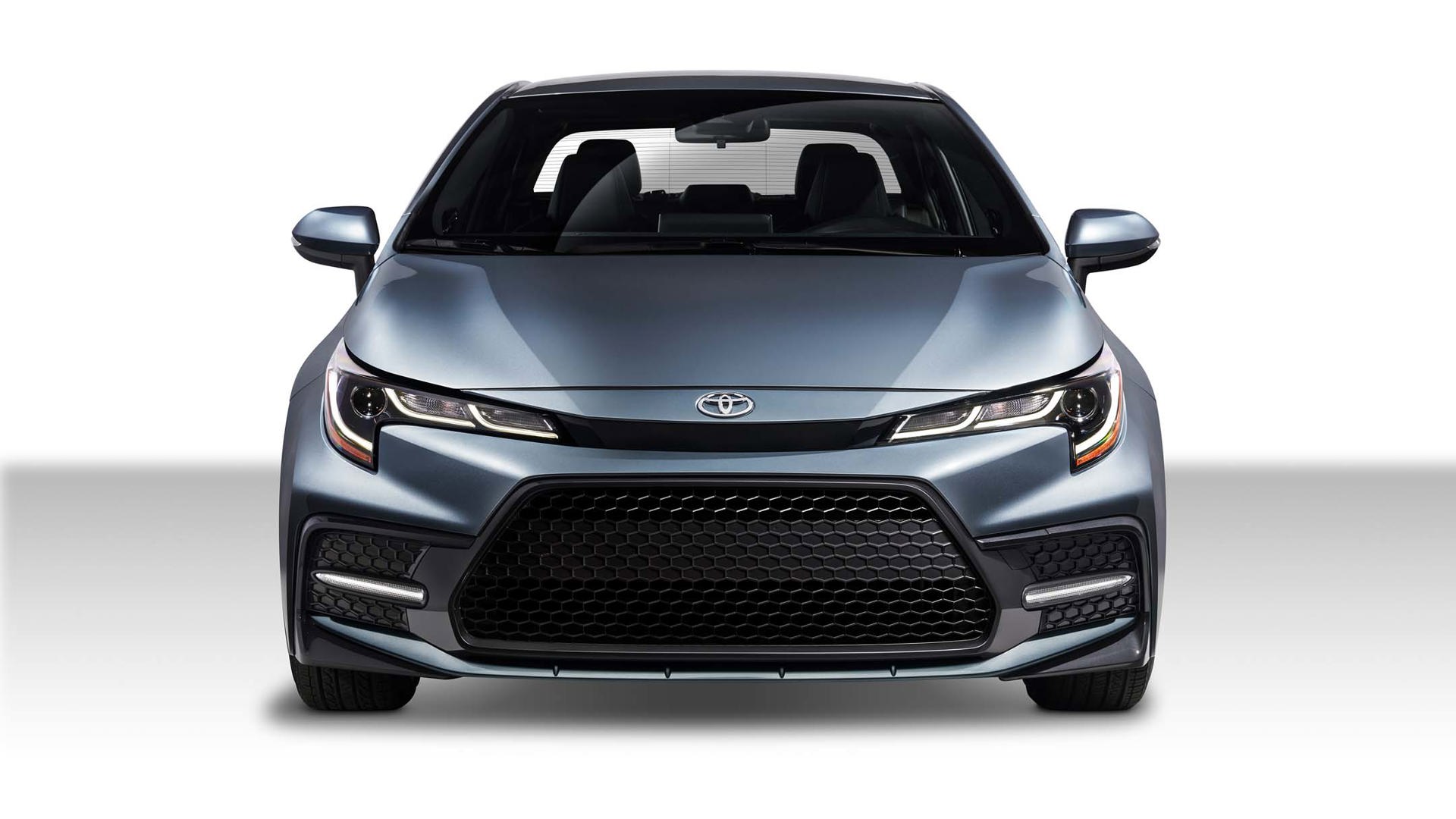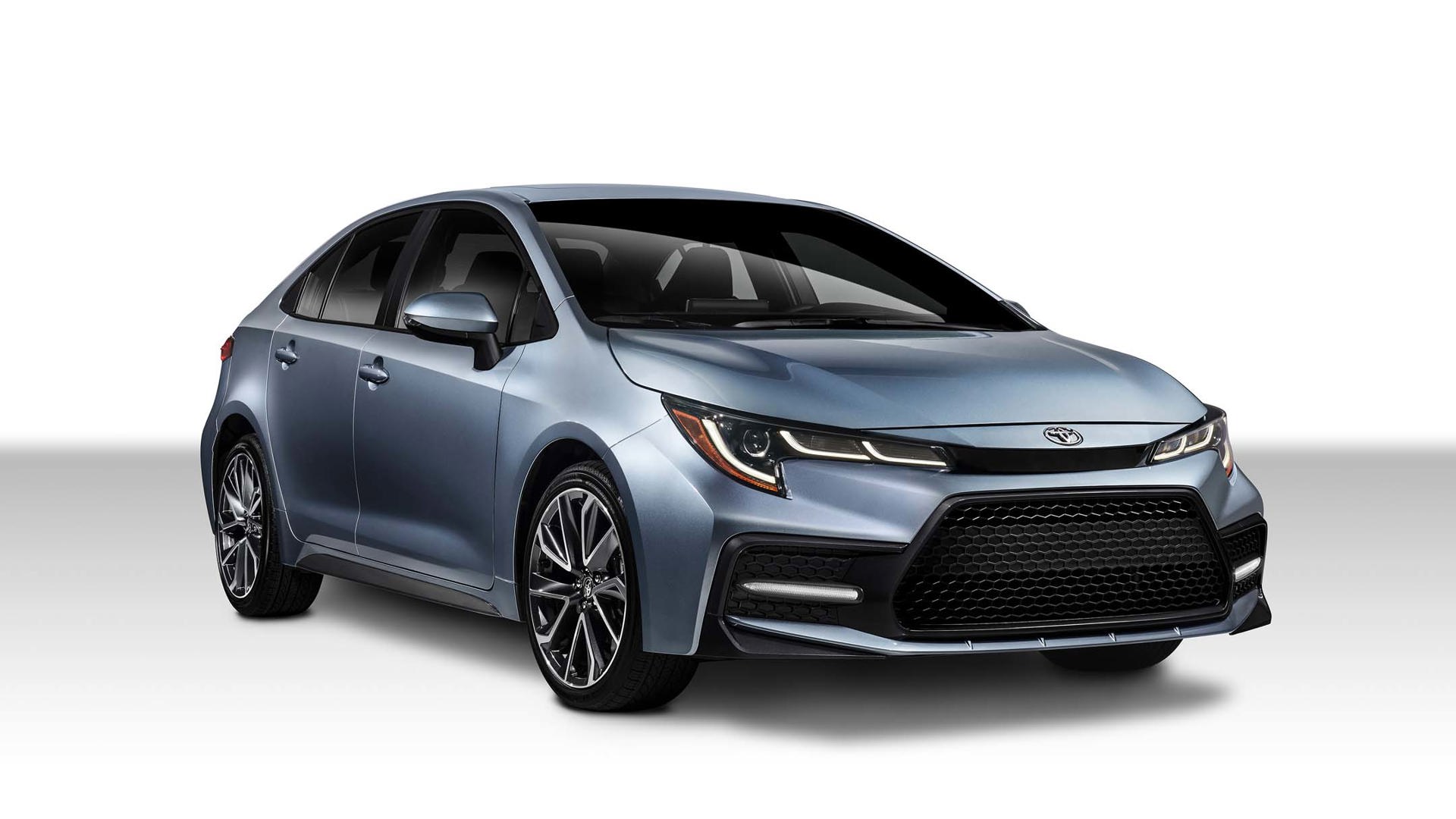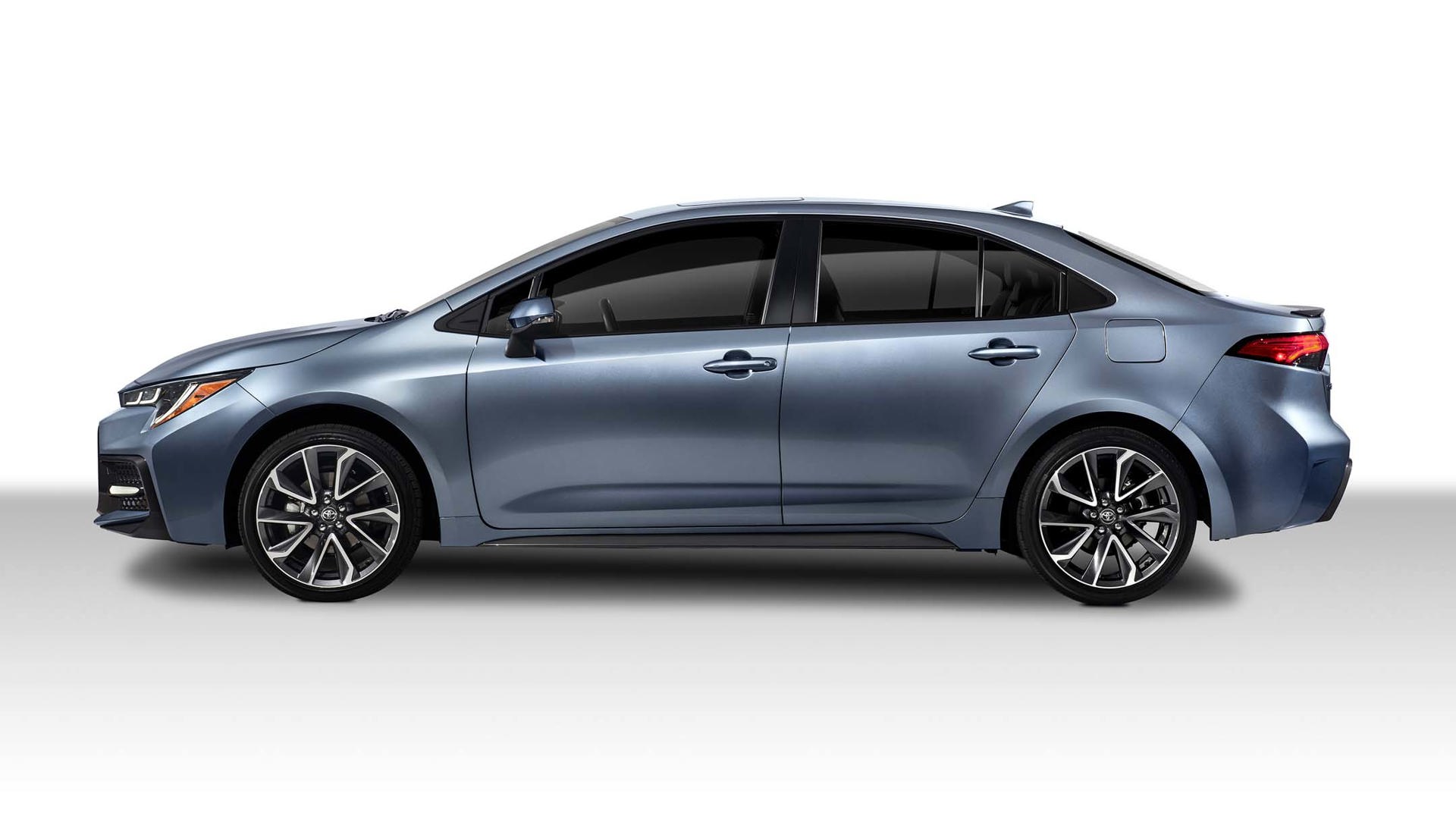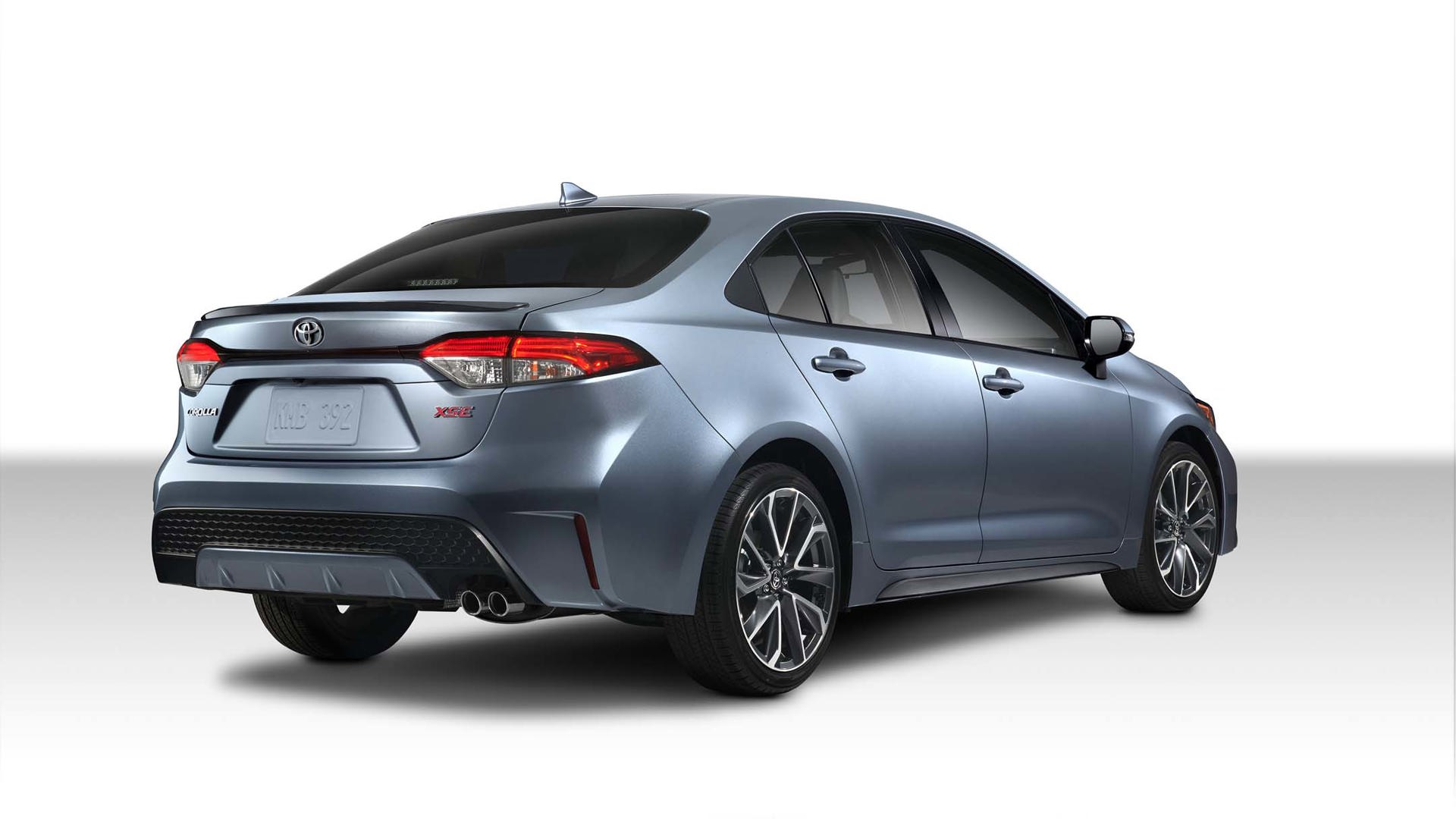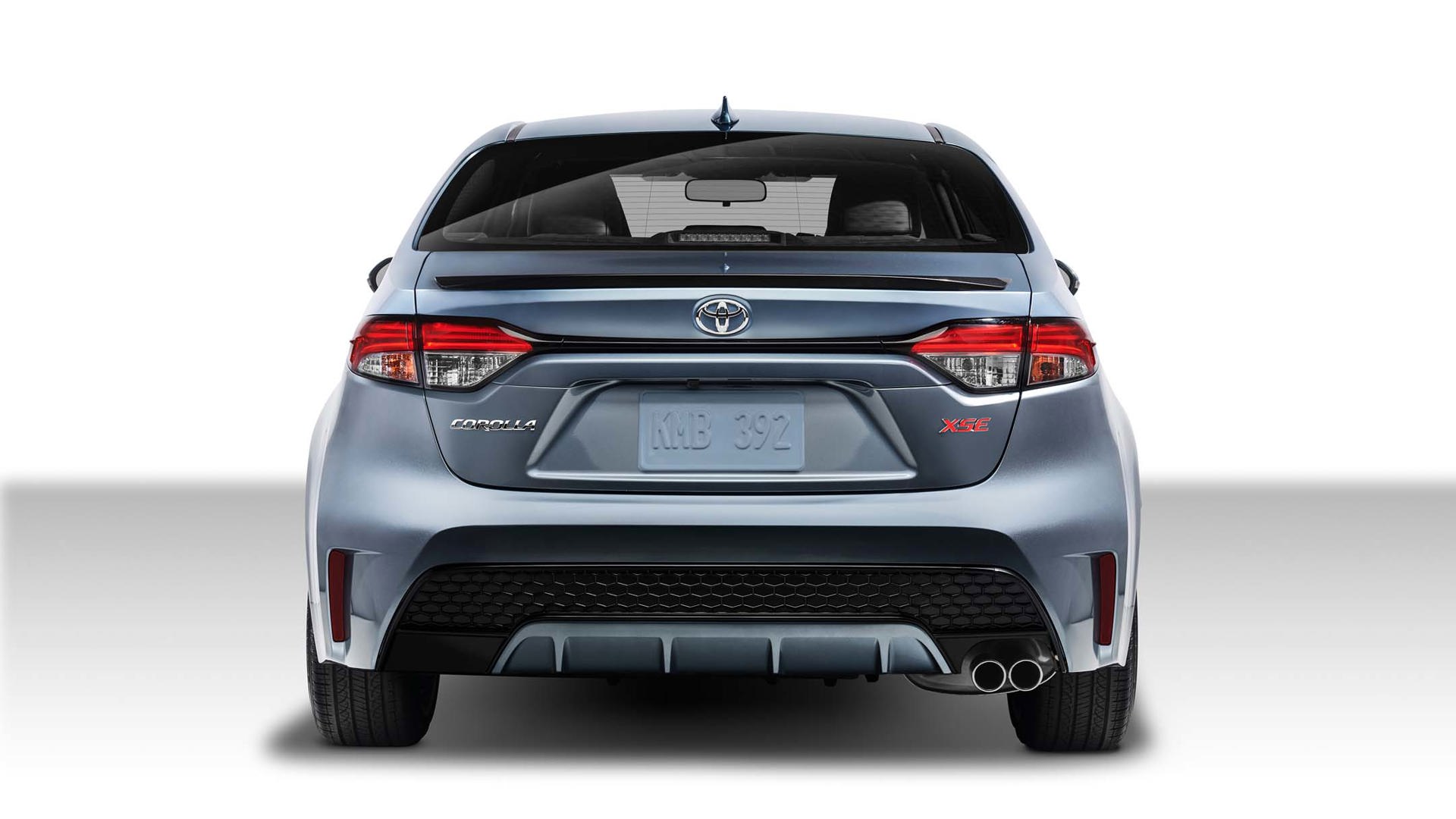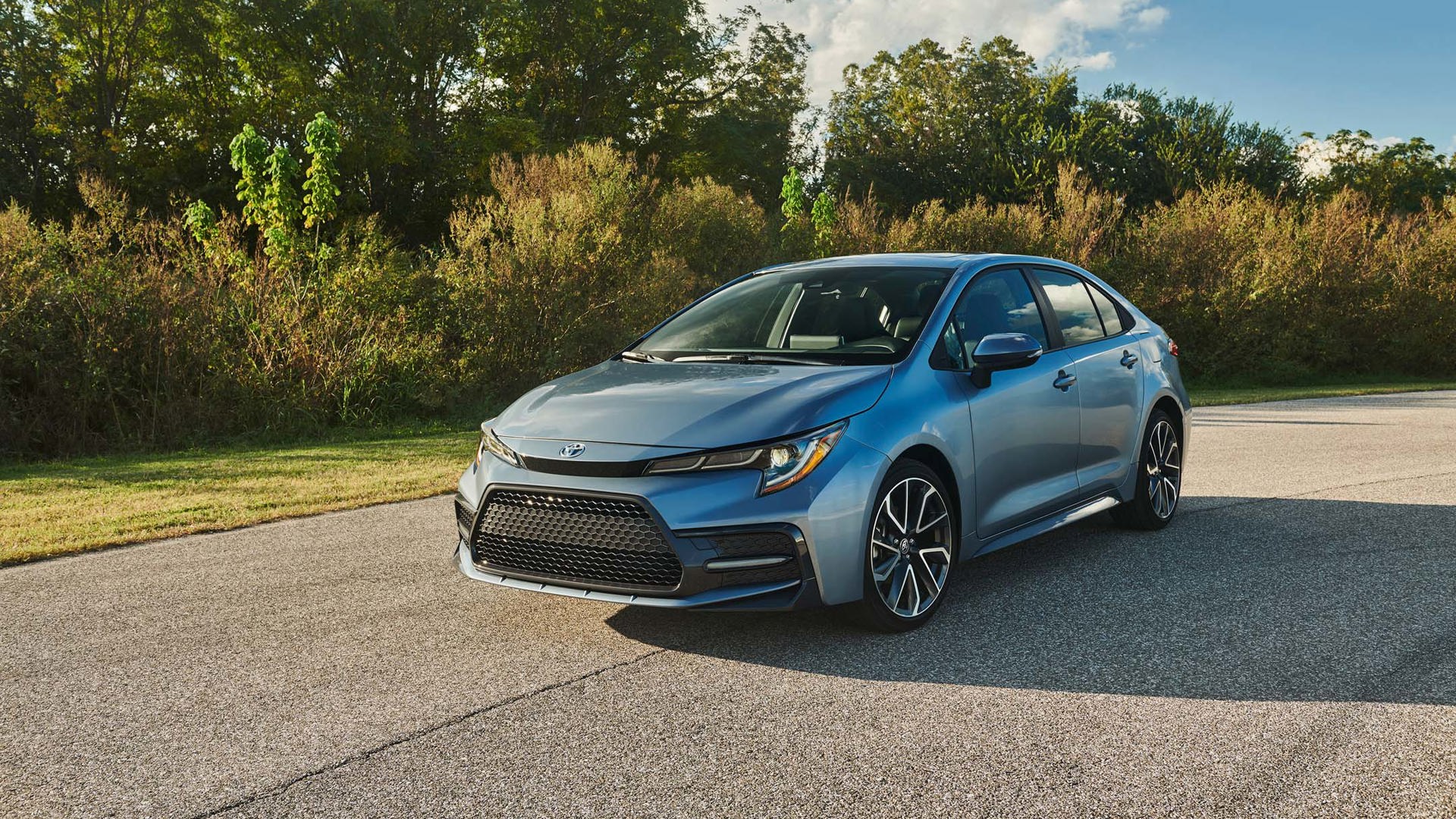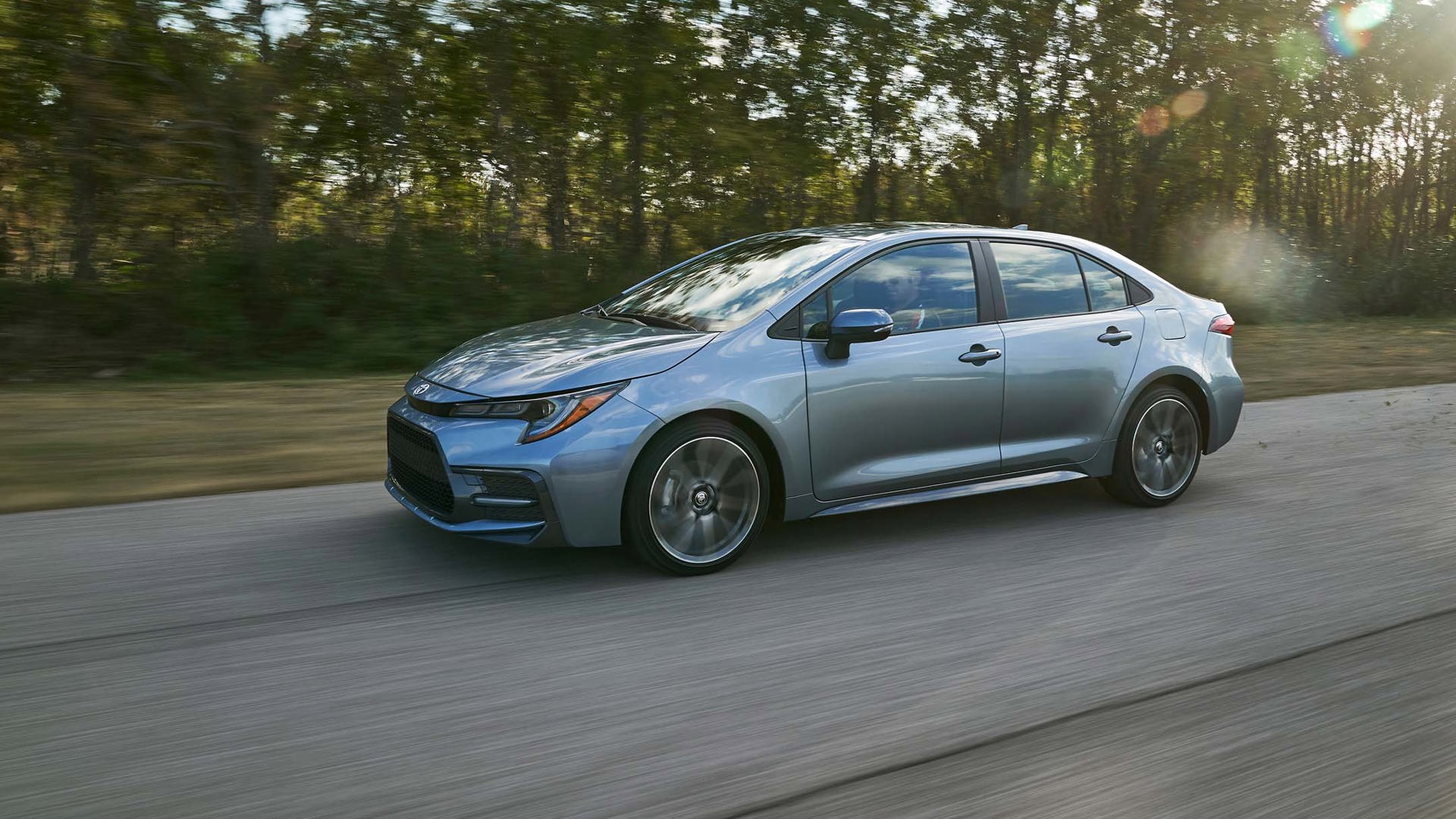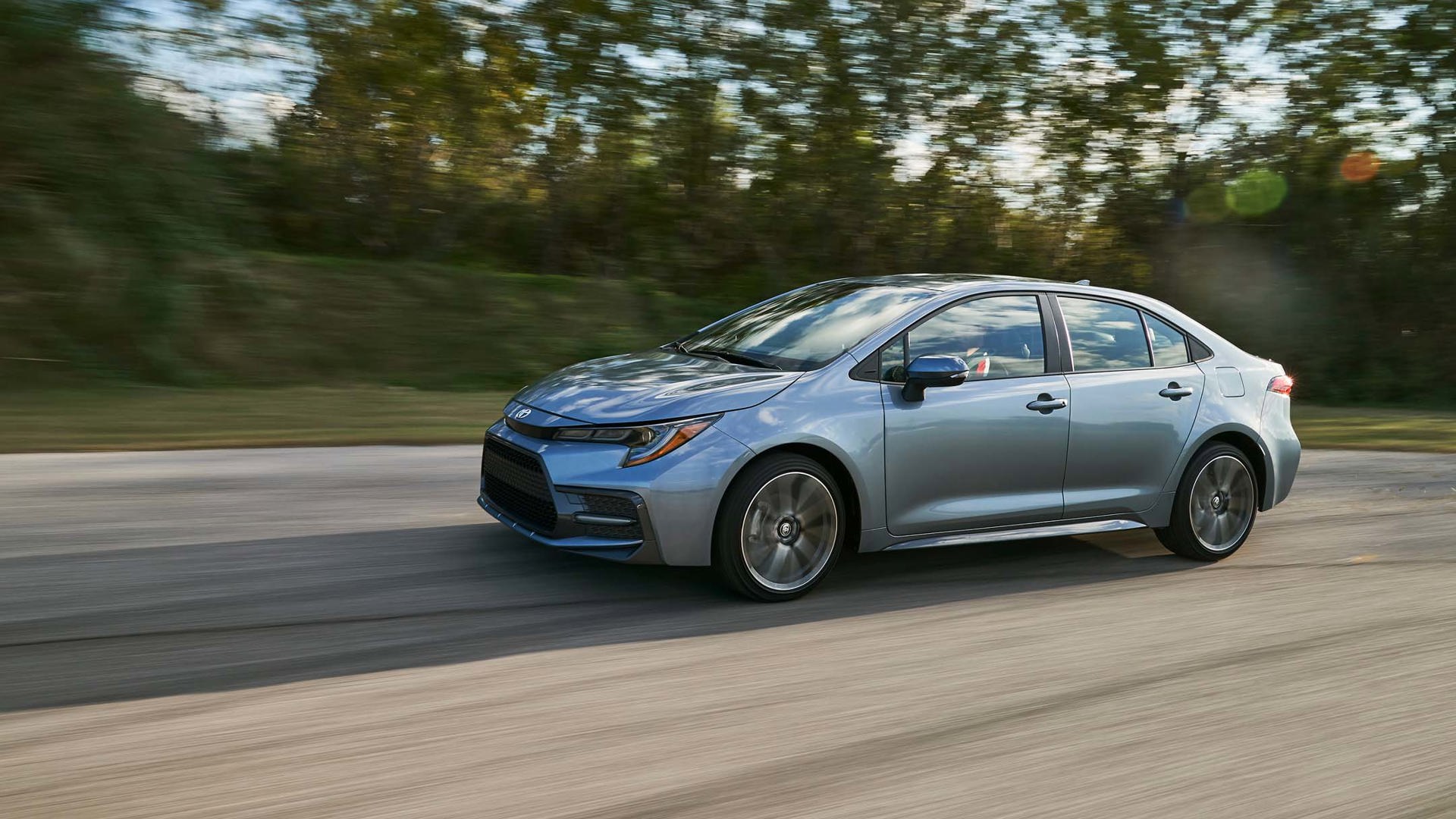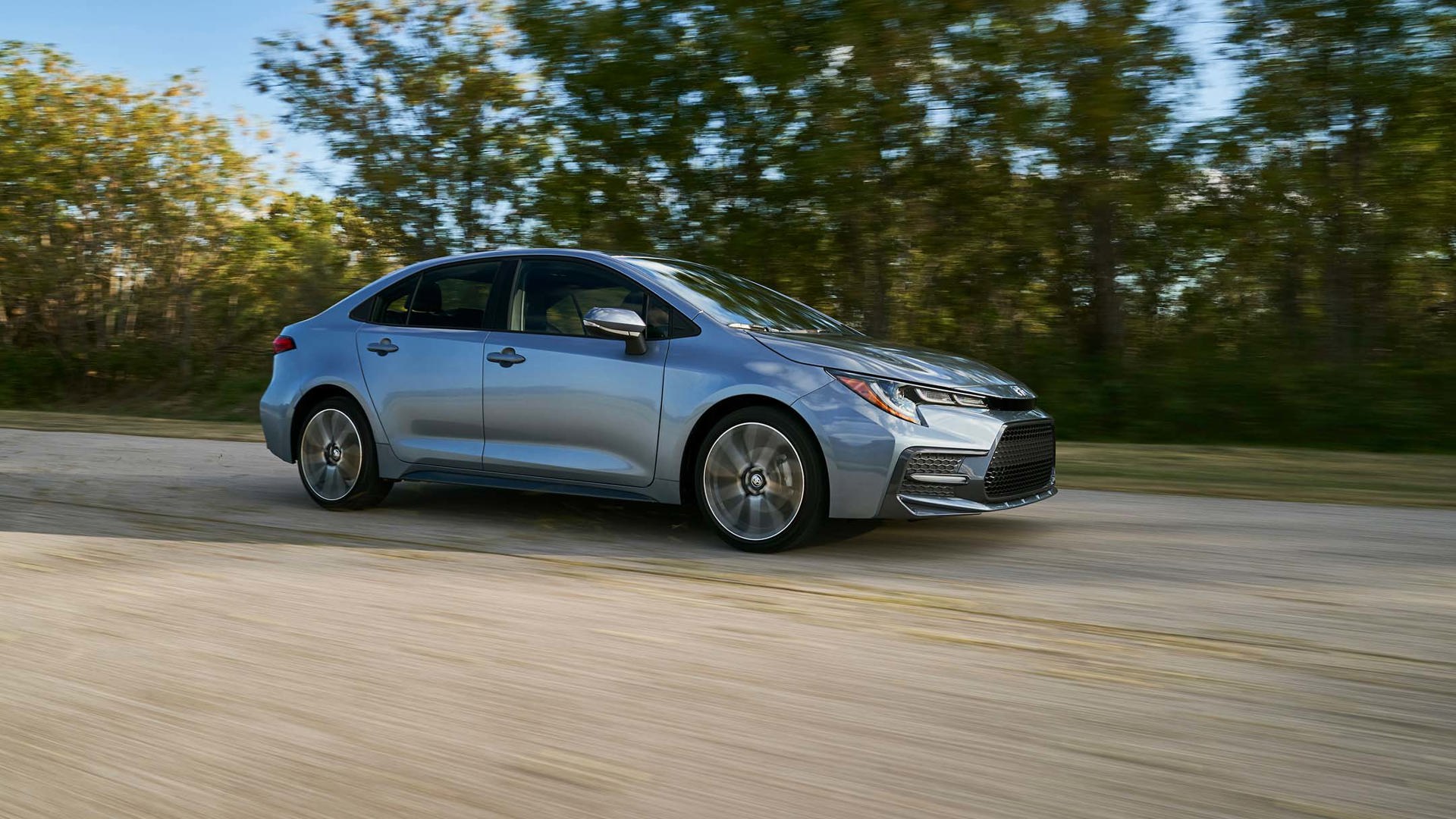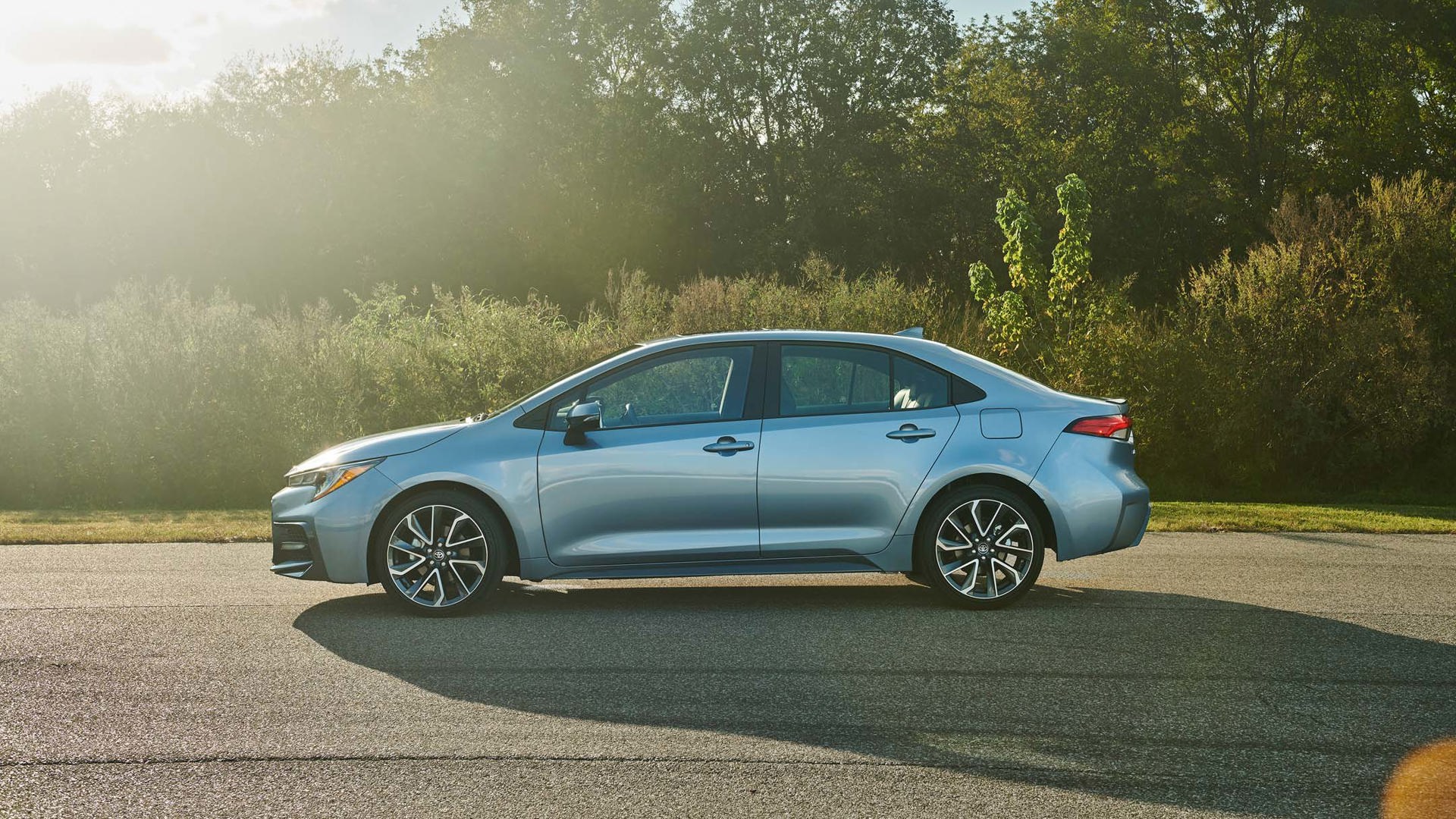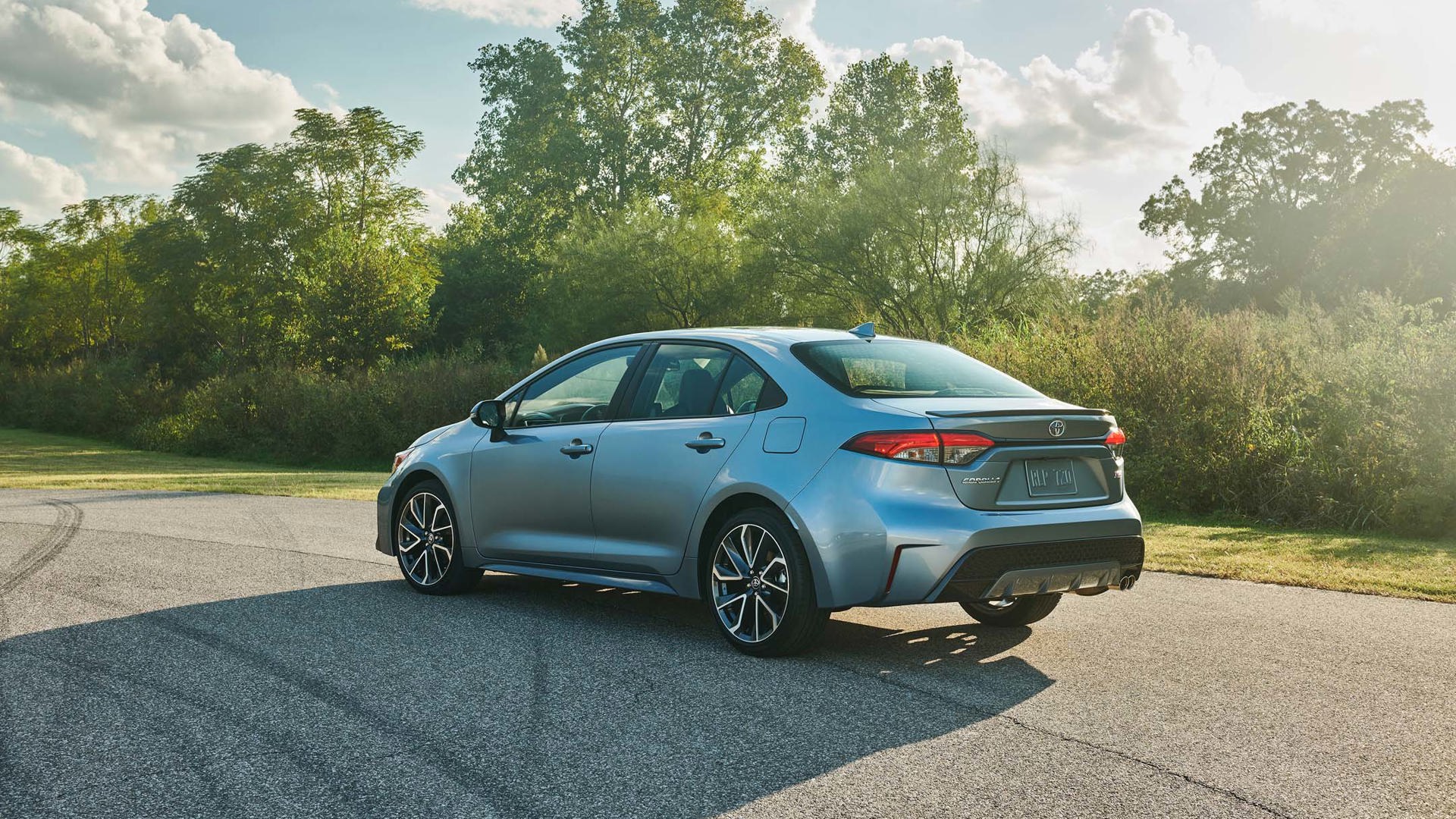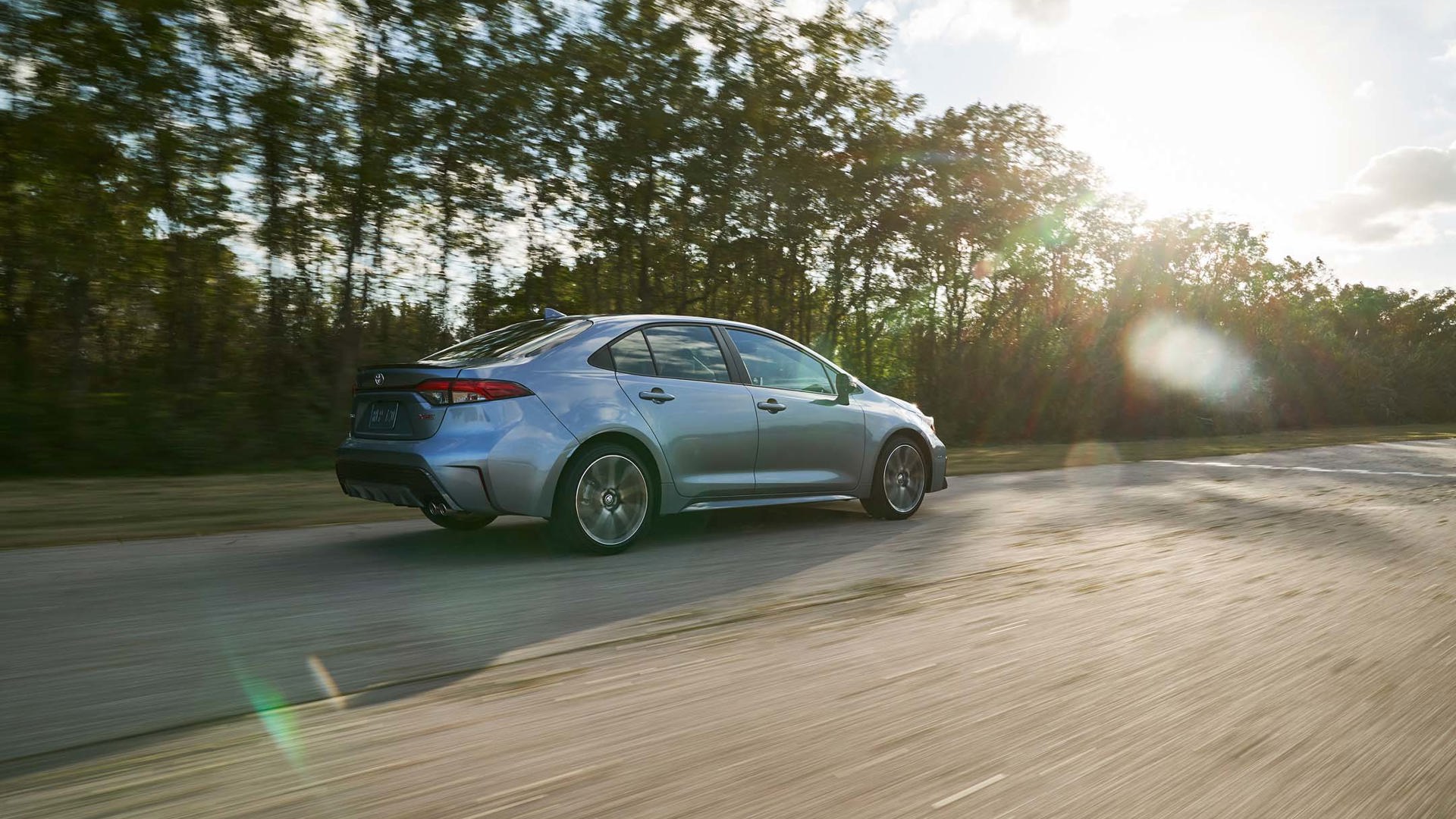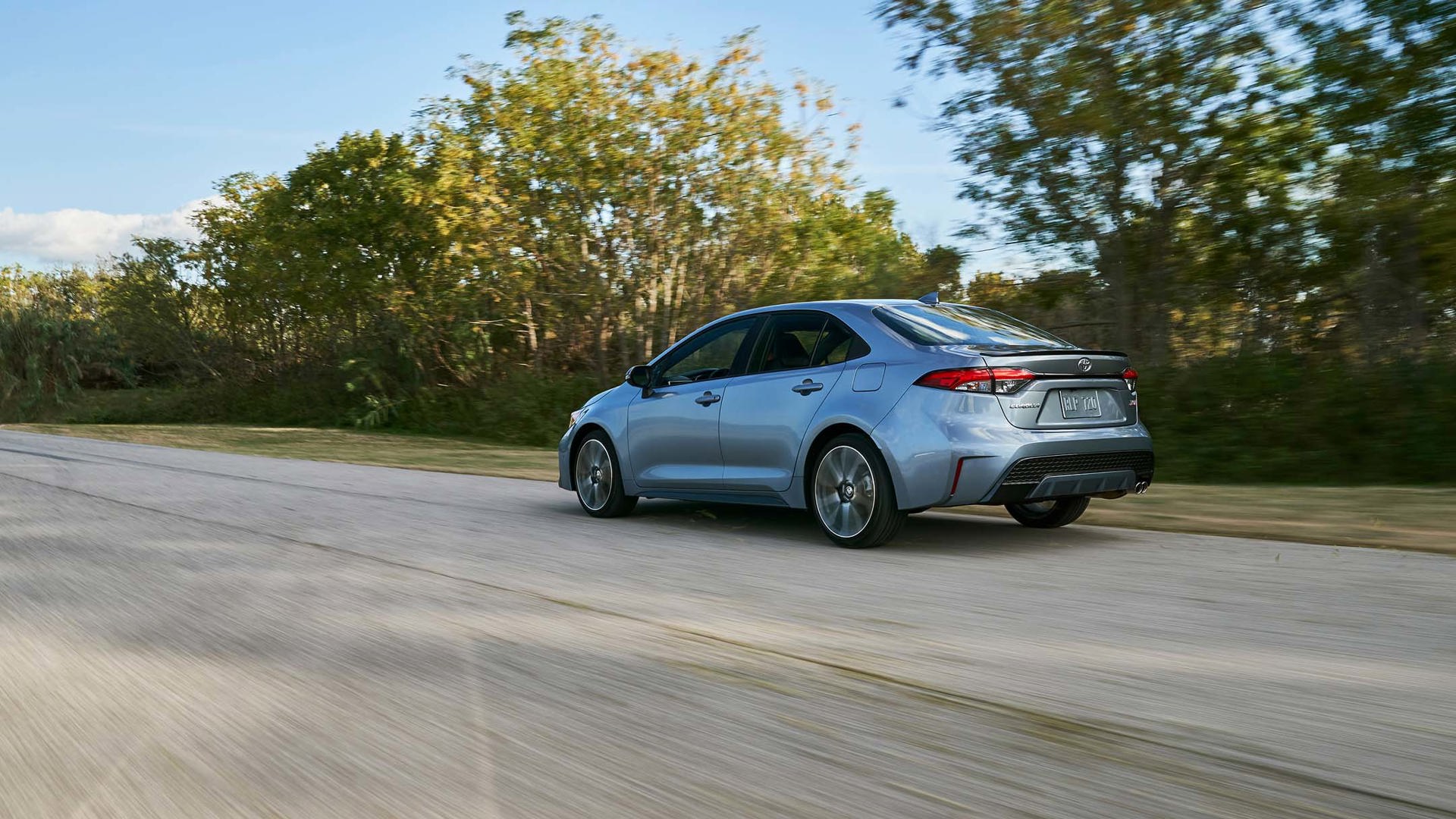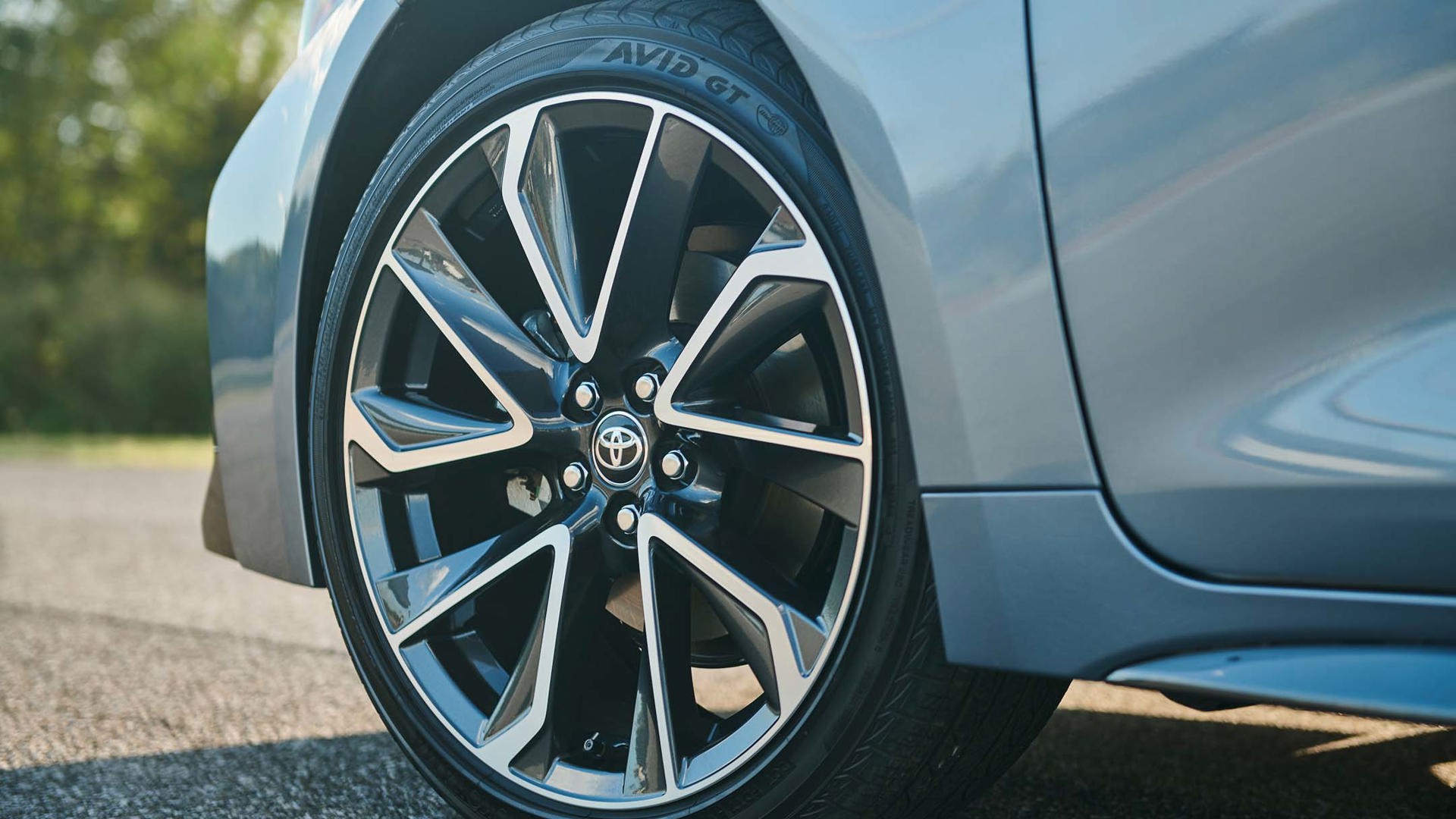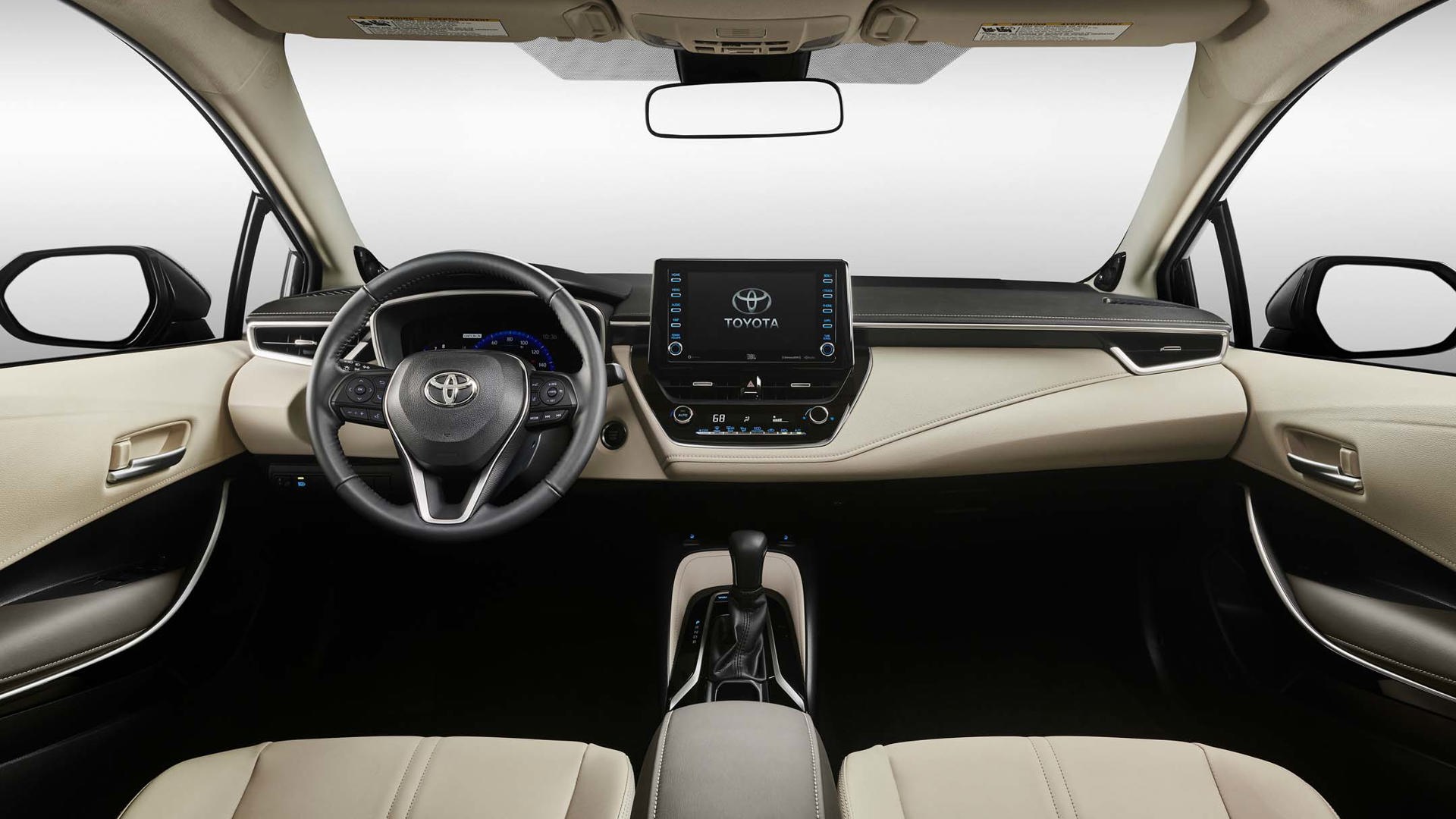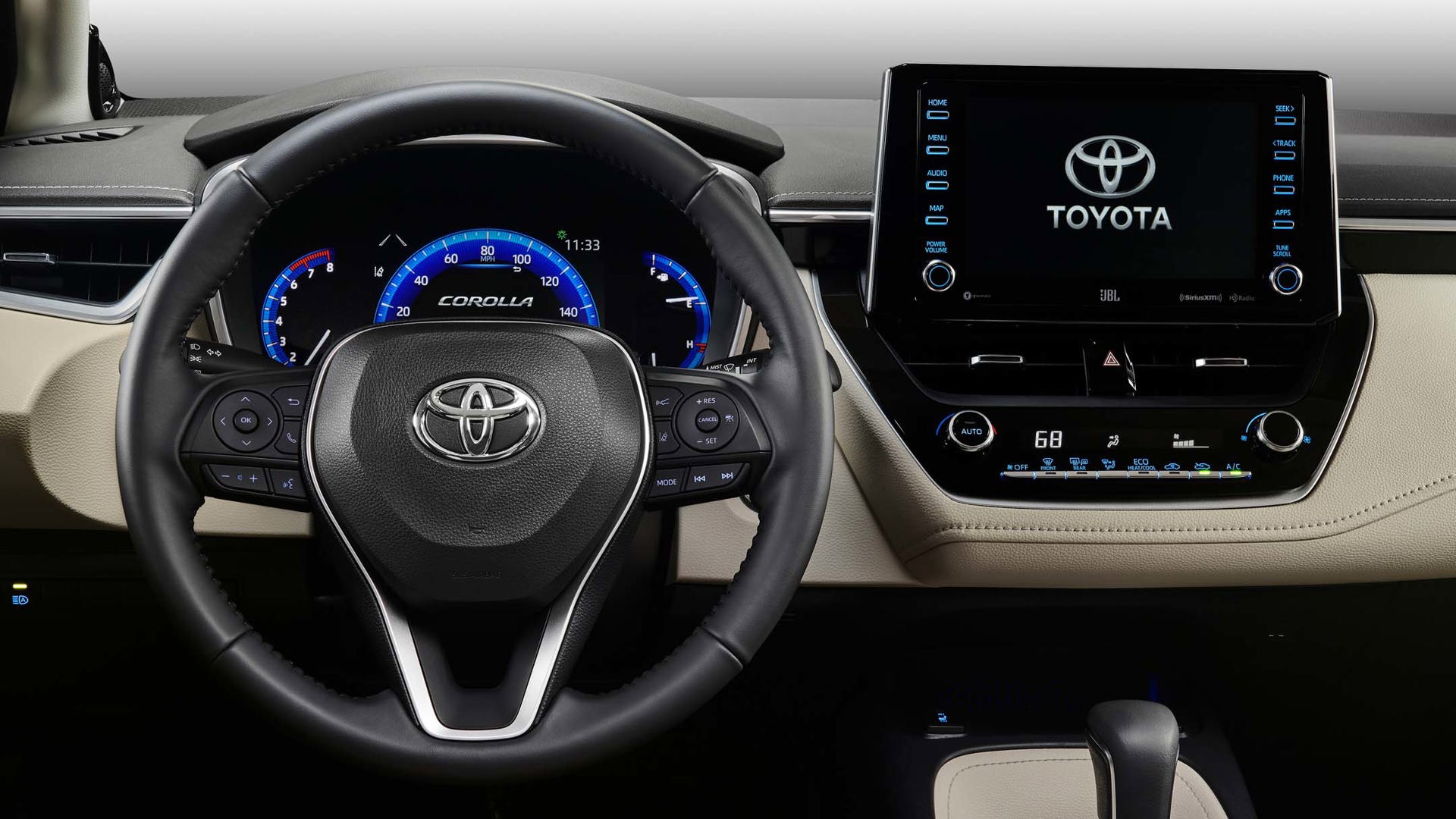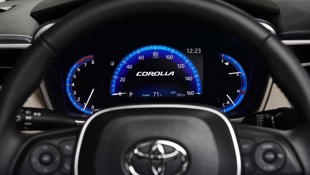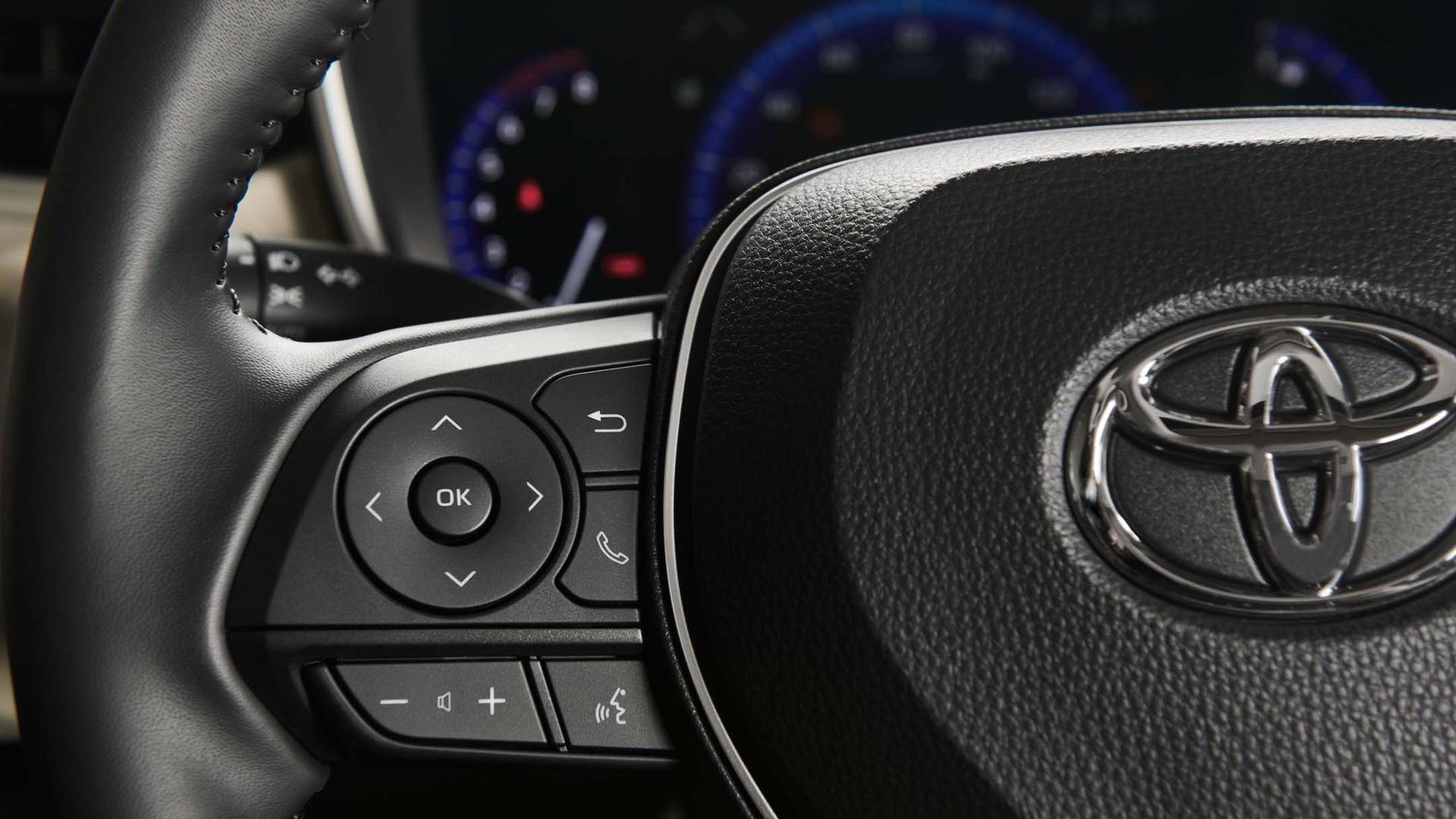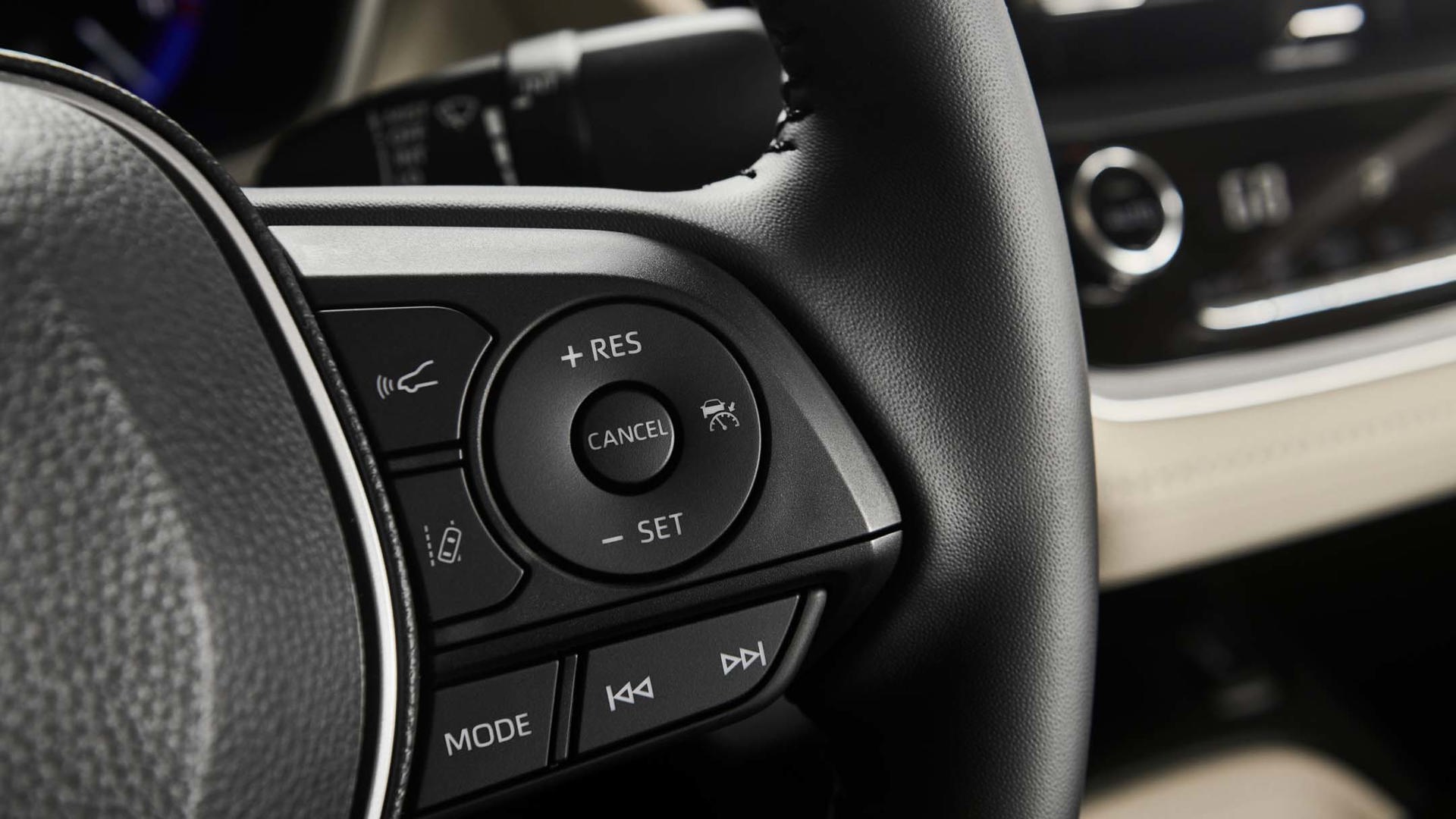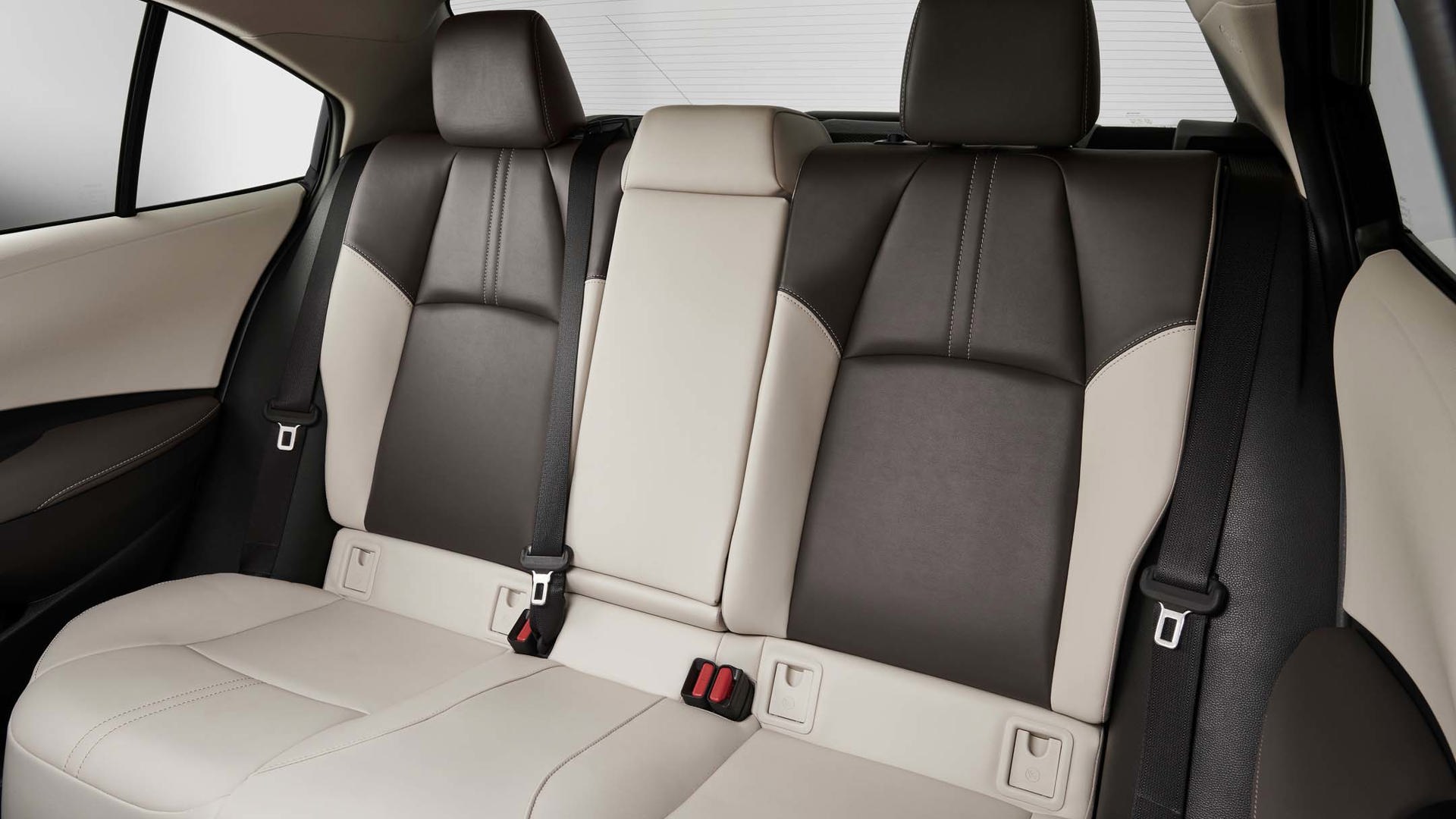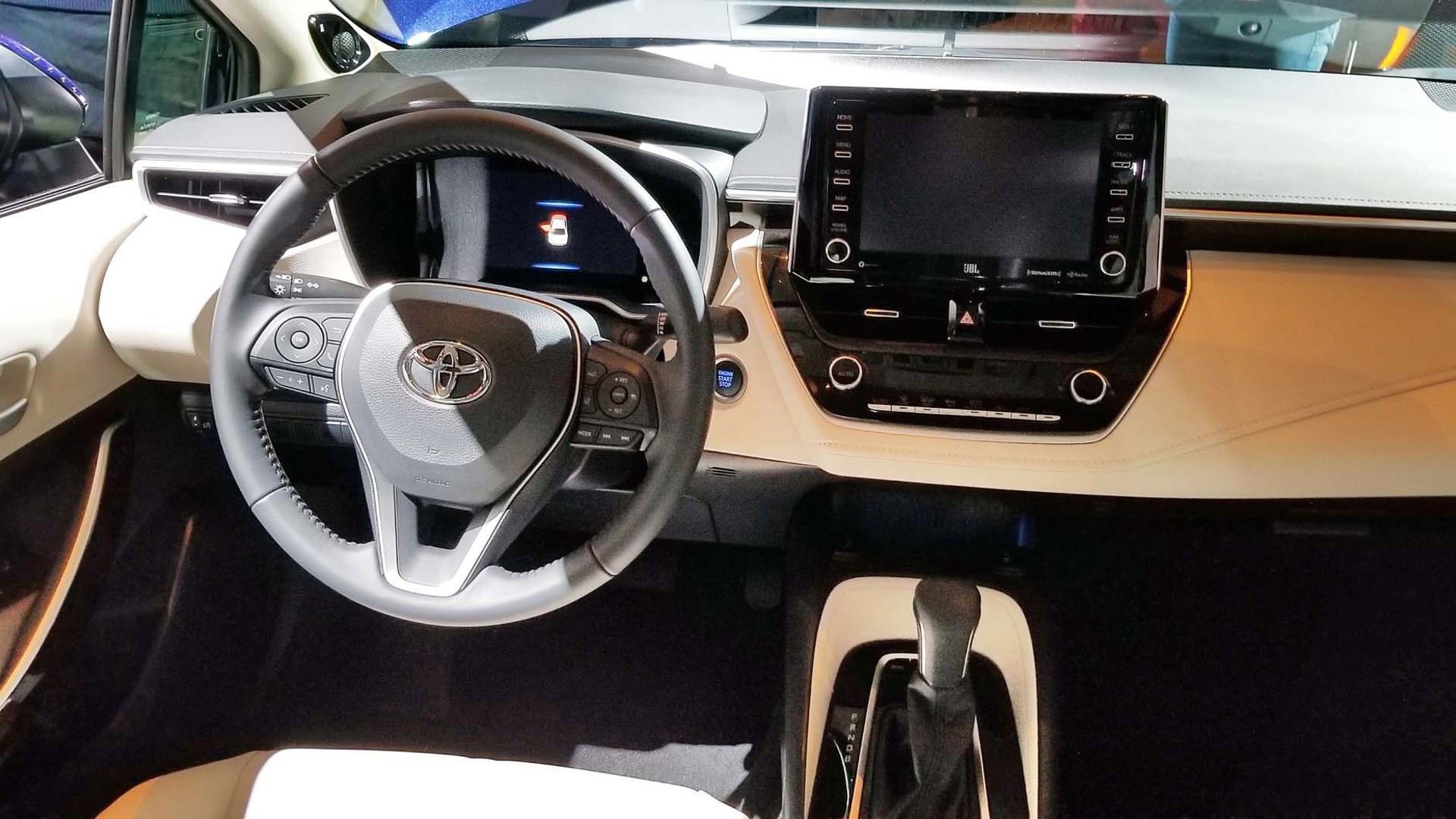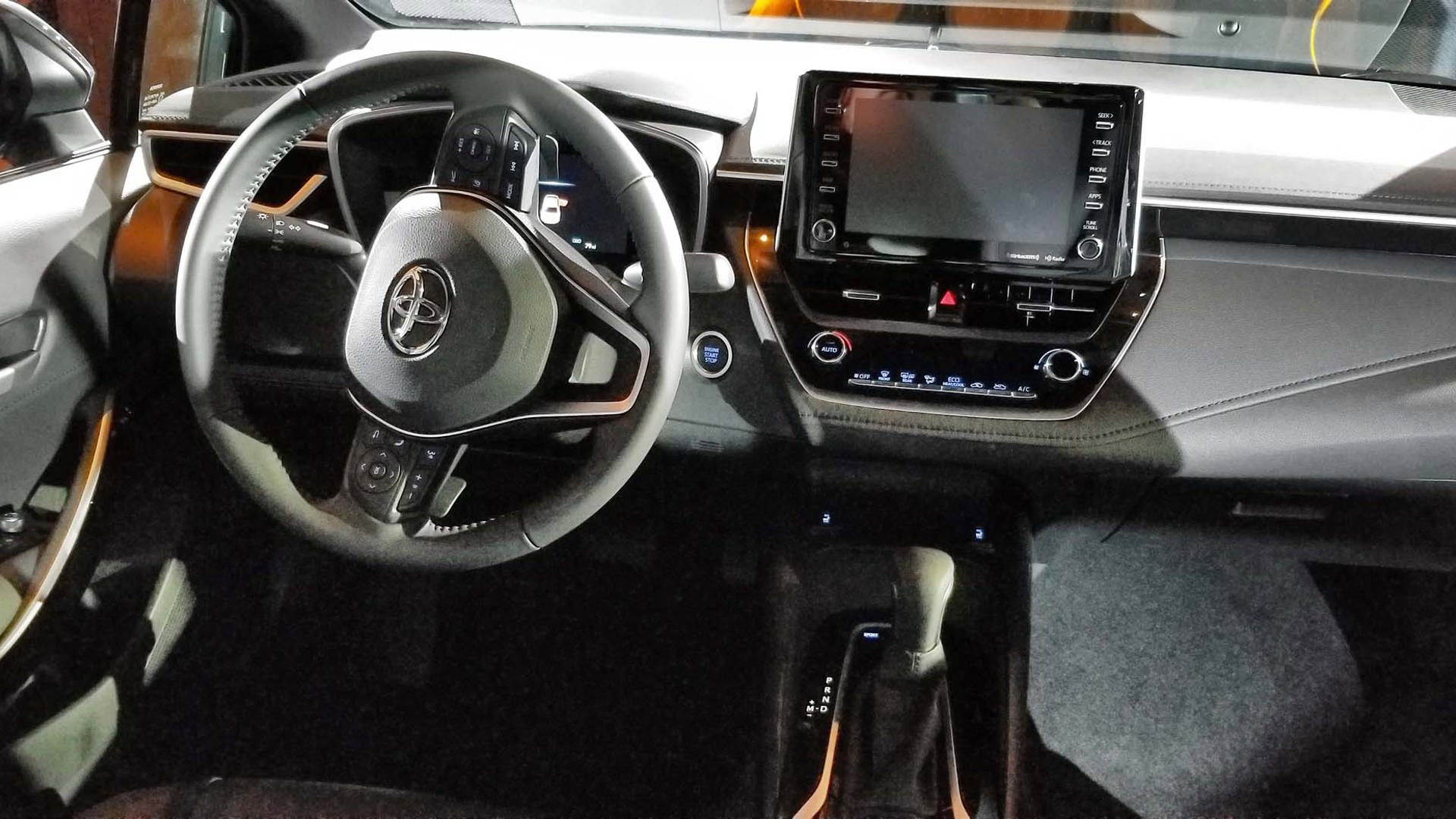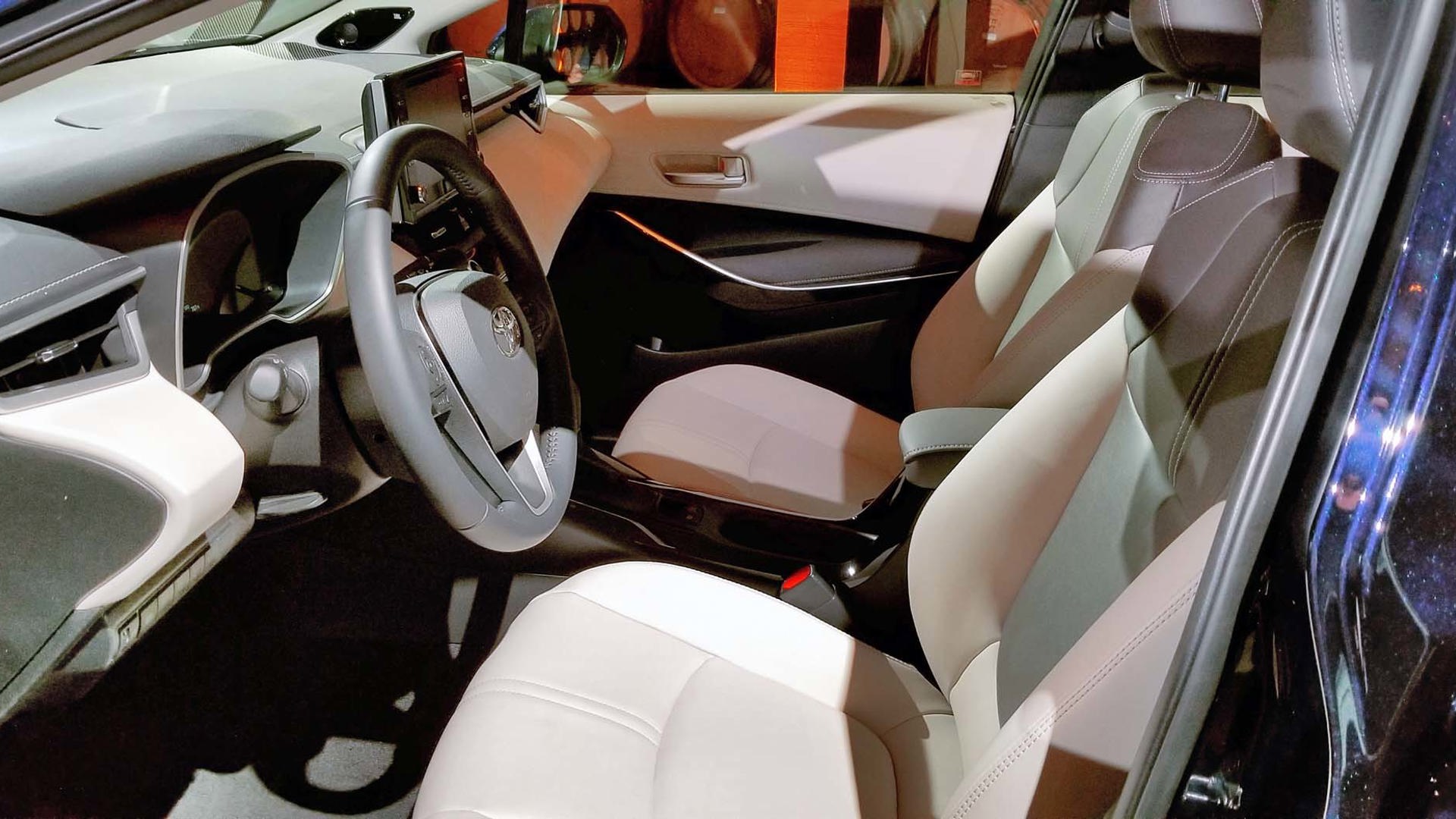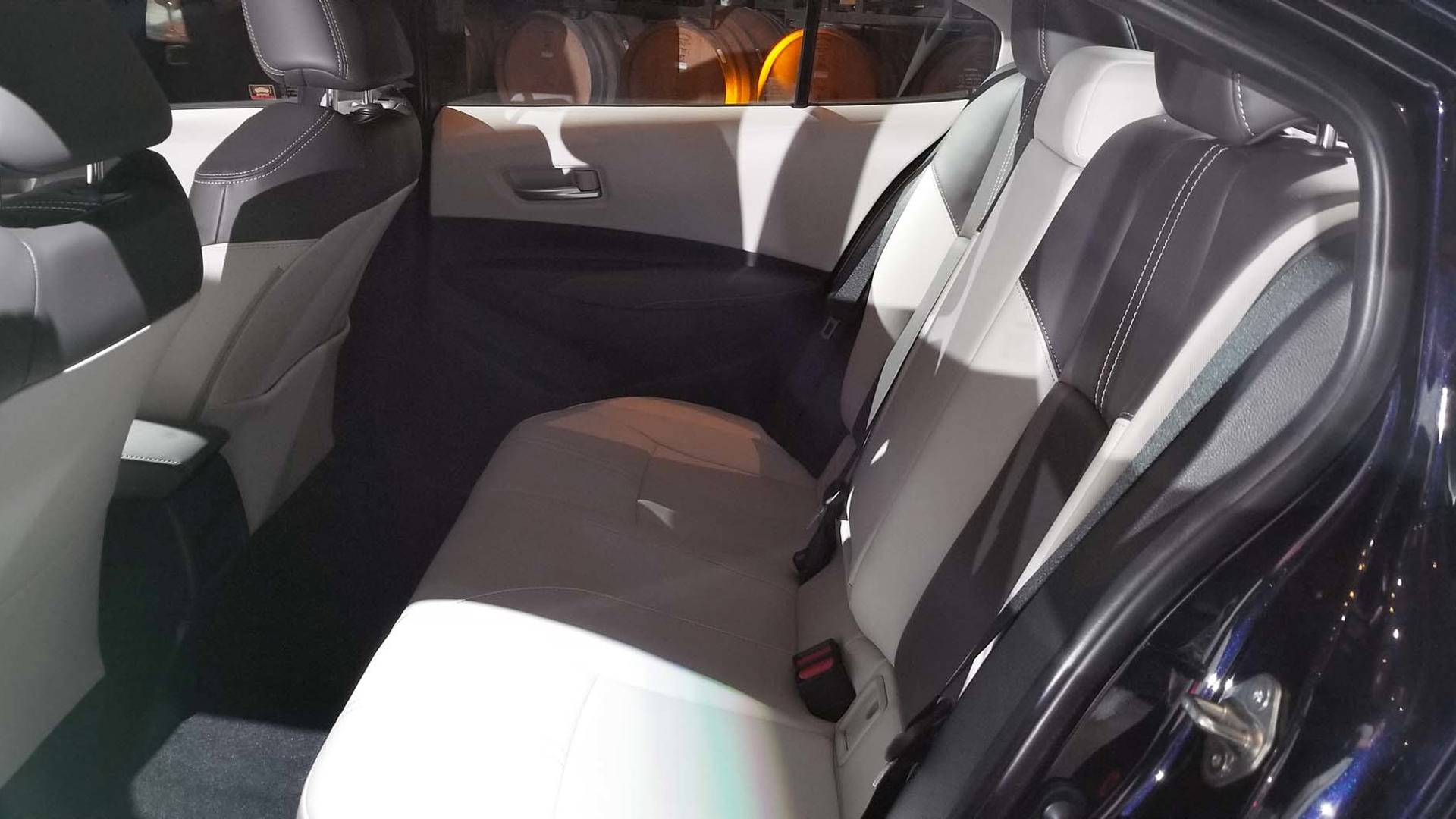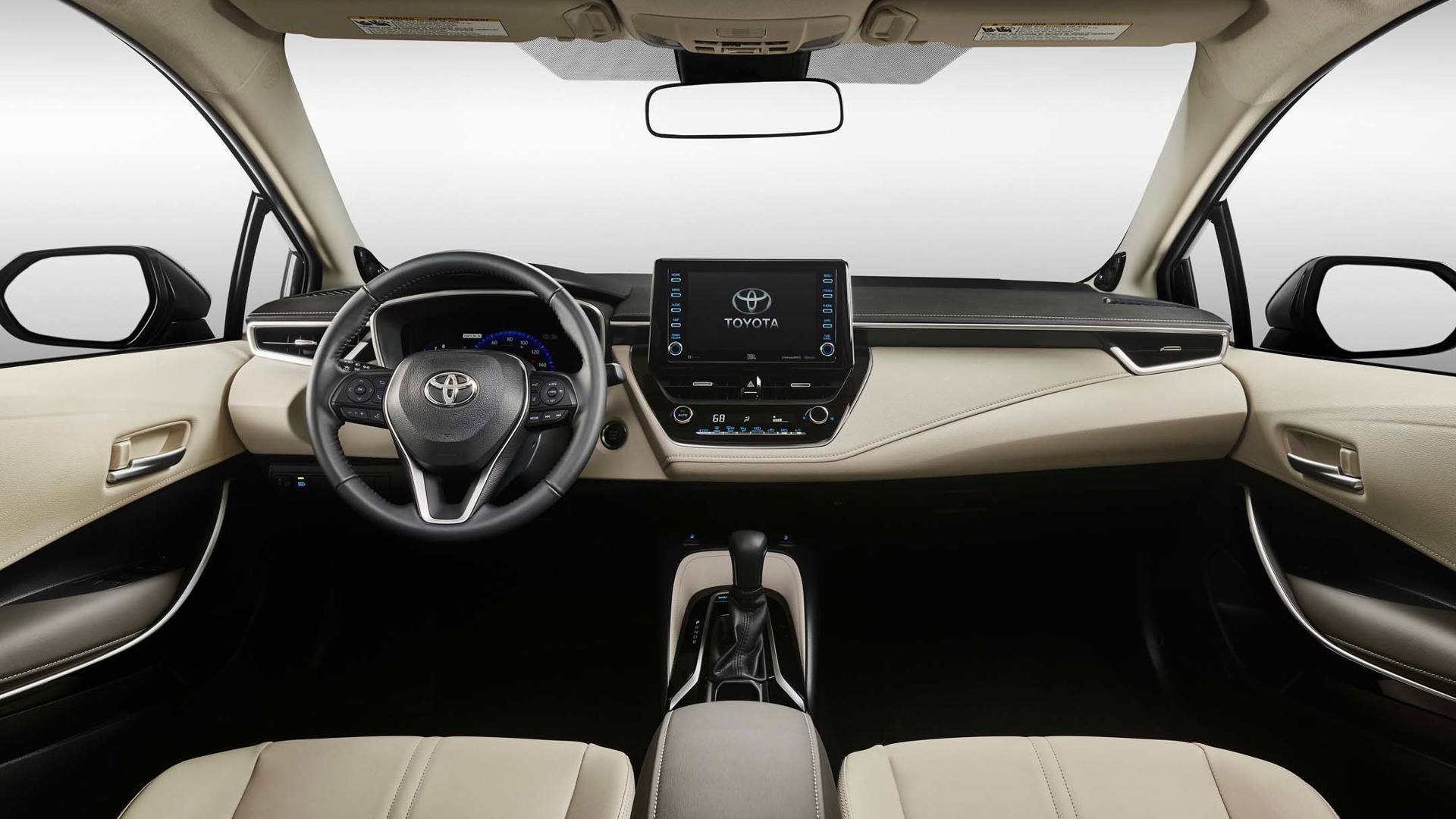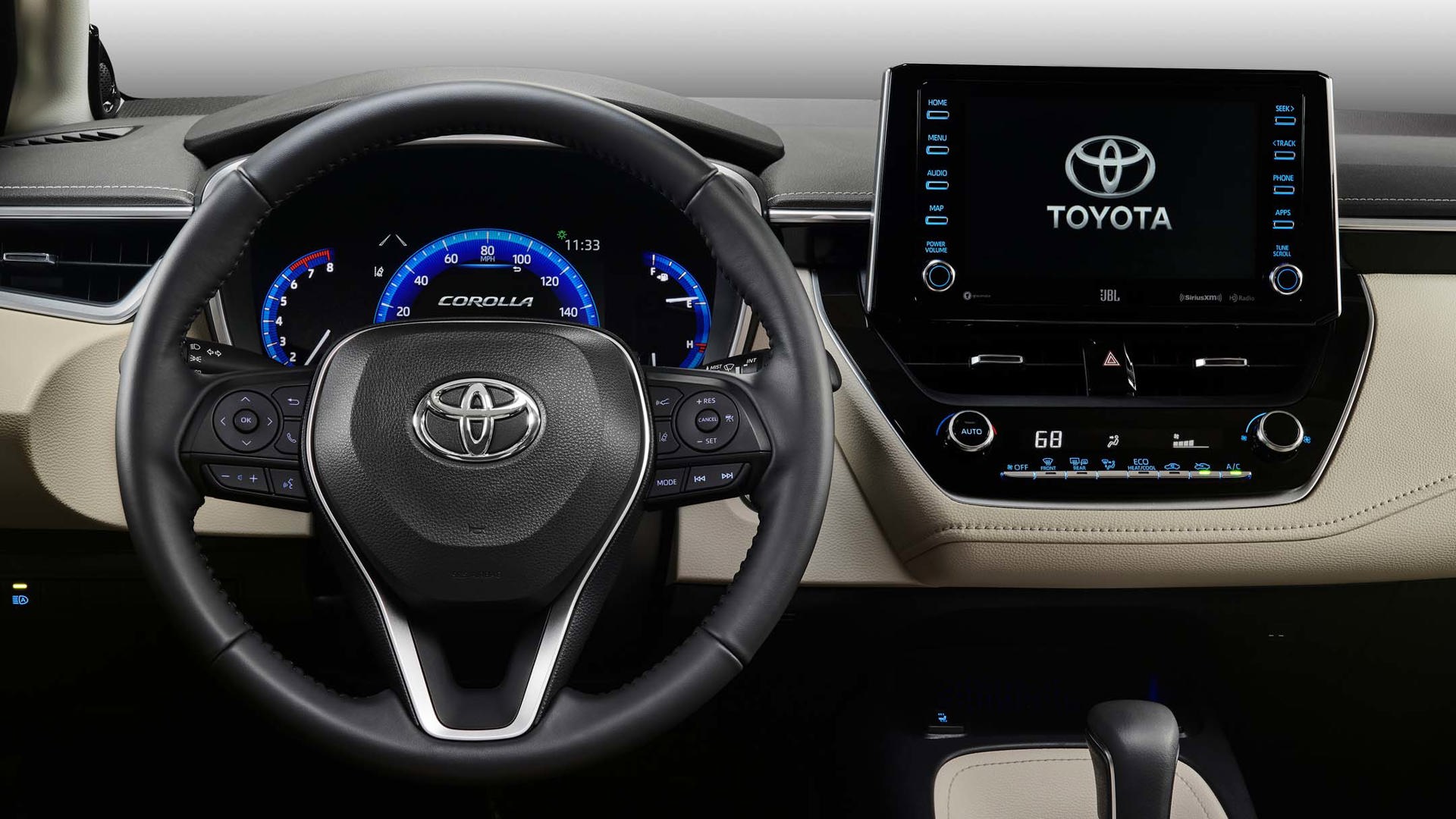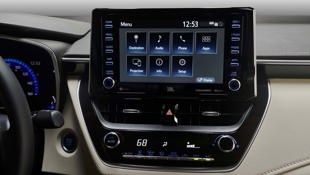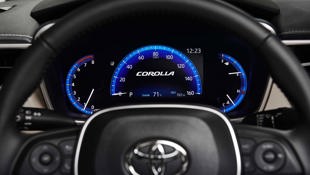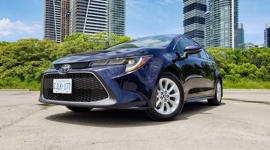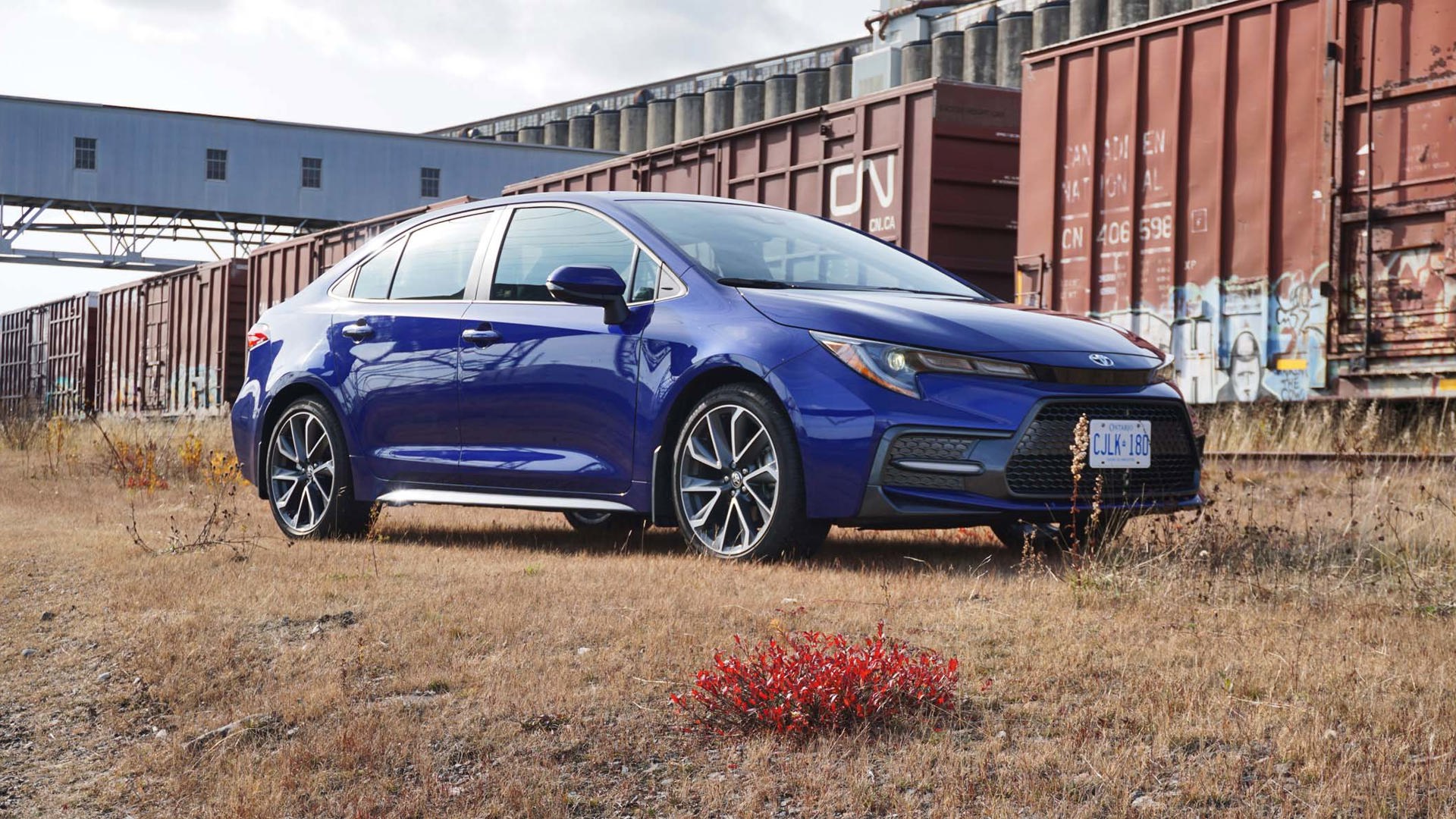We’ve just finished driving the new 2019 Toyota RAV4 through the hills of Carmel Valley in California – which you’ll hear more about here at autoTRADER.ca in the coming days – and we’ve arrived at a winery for a post-drive cocktail reception.
At the far end of the room, there’s a huge banner extolling the virtues of a new Corolla. My media colleagues and I share a laugh. Oh, Toyota – how could they have put up the wrong sign? They’re not planning to… surprise us with something, surely. Not Toyota, a company that’s built its name on being one of the most conservative automakers on the planet.
Sure enough, a few minutes later we’re ushered around to the other side of the banner, and two cars are waiting there under cover of silks. Yes, it’s the global reveal of the 2020 Corolla Sedan, not on an auto show floor in Detroit or Tokyo, but in a wine cellar, surrounded by barrels rather than barriers, and catching everyone completely unaware. And neither of the cars is beige.
Maybe, just maybe, Toyota is travelling down a different road these days.
New TNGA Architecture
The 2020 Corolla Sedan moves to the Toyota New Global Architecture platform. This brings about a number of changes, including a 60 percent increase in torsional rigidity, a new powertrain, and some updated dimensions. The wheelbase on the new Corolla is unchanged, but it will have a wider front and rear track (by 11 and 22 mm respectively), a 33 mm shorter front overhang, a 15 mm longer rear overhang, a 20 mm reduction in height (which also happens to correspond with how much lower the centre of gravity sits), and a 35 mm lower hood.
The suspension updates are particularly interesting. Rear torsion beams are being replaced with multi-link independent suspension, and a revised MacPherson strut setup in the front is set up for smoother upward travel through a coaxially mounted strut beam. Toyota says these changes have reduced front and rear suspension friction by 40 percent.
New Premium Grades
New top-tier XLE and XSE grades have been added (as opposed to the current XSE, which is more of a package), and following with what’s becoming a Toyota trend, the standard and sport grades will have distinct front-end styling to set them apart from one another.
The standard L grades are similar in design to the current model but pull the nose forward into a more aggressive stance, streamlining the outside of the grille, and reducing the prominence of the side air intakes. On the sport S grades, the Toyota logo moves up onto the hood to make way for a sleek black key line above a blacked-out grille and slim fog lamps, and the XSE comes with dual-tip exhaust while the SE and XSE have available 18-inch wheels (as opposed to the standard 16-inch). All models come with LED headlamps, and both top grades have an updated design that Toyota refers to as triple-J, which becomes self-explanatory upon viewing.
On the powertrain side, the L grades will come with the same 1.8L four-cylinder engine as the previous generation but with a 7 hp bump up to 139 hp. The sport grades, however, come with a new 2.0L four-cylinder engine, the same one available on the Corolla Hatch. It’s still not turbocharged, but it does have a high 13:1 compression ratio, electronically controlled variable valve timing, and high-speed combustion to keep it efficient while bumping the output up to 169 hp at 6,600 rpm and 151 lb-ft of torque at 4,800 rpm.
The CVT is likely to be the go-to transmission and has a physical first gear that improves start-up acceleration before handing over to the pulley system, which has a more dramatically stepped feel to simulate a traditional 10-speed transmission. On the sport grades, this will come with paddle shifters as well. That said, you’ll still be able to get – wait for it – a six-speed manual! (Sound the horns!) This isn’t a throwaway base-model offering, either: it comes with a downshift rev-matching feature more commonly found among the sports car set.
New Safety Packaging
Toyota has been offering a suite of safety technologies as standard, dubbed Toyota Safety Sense, for a couple of years now. On the Corolla and other newer models, this has been upgraded to Toyota Safety Sense 2.0, which takes the original four offerings – pre-collision avoidance with pedestrian detection, dynamic radar cruise control (capable of low-speed following, but only with the CVT), lane-departure alert with steering assist, and automatic high-beams – and adds on a new lane-tracing feature (standard only with the CVT models) and brake hold system to keep the brakes engaged from when the vehicle reaches a stop until the driver hits the accelerator pedal.
Updated Multimedia Options
No, there’s still no Android Auto. But there is Apple CarPlay, Siri Eyes Free, and Toyota’s latest Entune 3.0 infotainment system. An upgrade to Entune 3.0 Audio Plus, standard on XSE and XLE and optional on SE with the CVT, adds connected services such as HD radio, weather and traffic info, SiriusXM with cache, and an automatic call to emergency services in the event of an accident. Topping out the audio offerings as an option on the XLE and XSE trims is a nine-speaker, 800-watt JBL sound system.
Availability
There’s more news to come on the 2020 Corolla Sedan: a hybrid version is set to be revealed at the Los Angeles auto show later this month. The models outlined here will begin arriving in Canadian dealerships next March.

